
| 7
‘EMMY’ WINNER
Student Layla Heeres and her friends received a junior Emmy for their documentary
TEEN TRENDS
A look at the





| 7
Student Layla Heeres and her friends received a junior Emmy for their documentary
A look at the



SHANNON LEVITT | STAFF WRITER
Cantor Sarah Bollt, Beth El Phoenix’s newest clergy member, didn’t envision becoming a cantor growing up. Instead, she wanted to (and did) become an interpreter for the deaf. That educational choice and career ended up helping her as a cantor.
“The job of a service leader is not to show off and be a diva, but to create a connection between the congregation and the divine. For me, there’s a very close relationship between what I do on the bimah and what I did as an interpreter creating a connection between the deaf and the hearing parties,” she told Jewish News. She considers herself “a language person.” Indeed, by the time she graduated high school, she had already received eight and a half years of foreign language instruction, including two years of American Sign Language and Hebrew from Tucson’s Hebrew High. While attending the University of Arizona and then working as an interpreter, she “explored my Judaism,” she said. At Tucson’s Congregation Or Chadash, she taught classes, led the ritual committee, sang in the choir and even substituted for the cantor on occasion. Still, it took her “a long time to get to the point where I knew this is what I want to do. Finally, it all came together.”
She decided to go back to U of A to take more Hebrew, Judaic studies and music theory and prepare herself to apply to cantorial school. To qualify for the program, she interned at Tucson’s Kol Ami Synagogue. Meanwhile, she was doing some interpreting for deaf Jewish families in Tucson and for religious services.
SEE CANTOR, PAGE 2
MALA BLOMQUIST | MANAGING EDITOR
It was 5:30 a.m. on Oct. 7, 2023, when Captain Elkana (Kuno) Cohen’s wife, Shiran, woke him up after a nightmare. She explained in her dream that terrorists infiltrated their town, and her husband was unable to shoot them. He calmed his wife, hugged her and assured her that nothing would happen to them, and they fell back to sleep.
Cohen opened his presentation with that story on Oct. 27 at Congregation Beth Tefillah in Scottsdale, in front of a packed social hall. He then shared excerpts from his book, “Oct. 7: The War Against Hamas Through the Eyes of an Israeli Commando Officer,” which also begins with Shiran’s nightmare.
Cohen wrote the book from his diary, which he kept while fighting in Gaza. Sometimes, he only slept three hours a night, so he could write down everything that occurred that day while his memory was fresh.
“I decided to document as much as I could,” he said. “We witnessed something that the entire world should understand.” He also shot videos with a GoPro of what his unit encountered.
Cohen, a reservist in the Israel Defense Forces (IDF), was a team commander with the Duvdevan Unit, made famous through the Netflix series “Fauda.” While serving in this unit, he met Shiran whose role was intelligence gathering. The couple settled in Ra’anana, Israel and are
SEE SOLDIER, PAGE 3
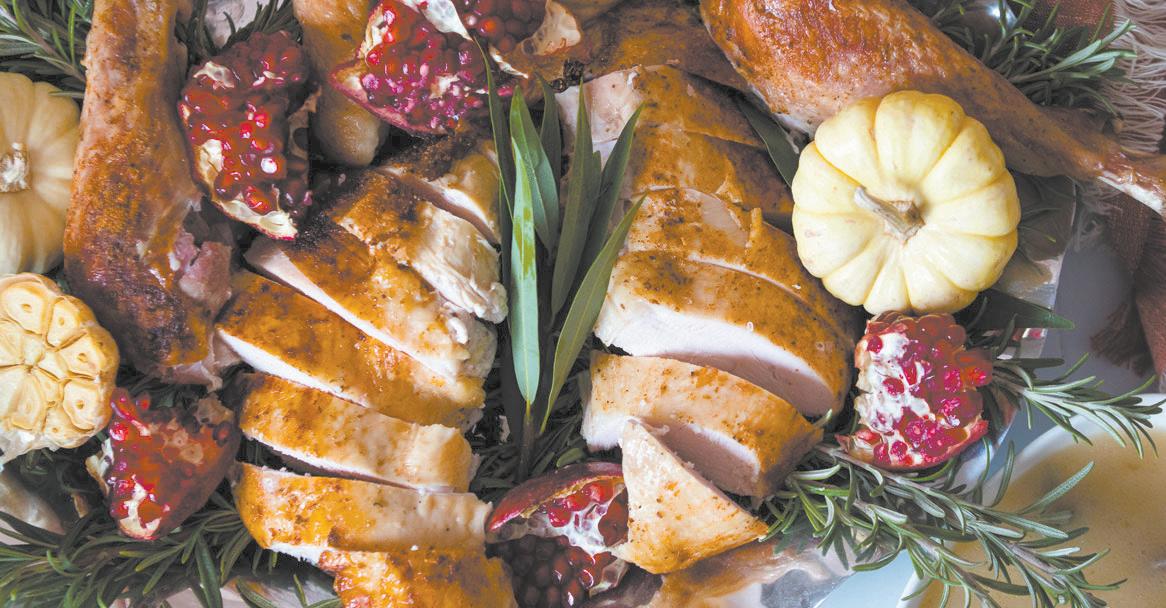
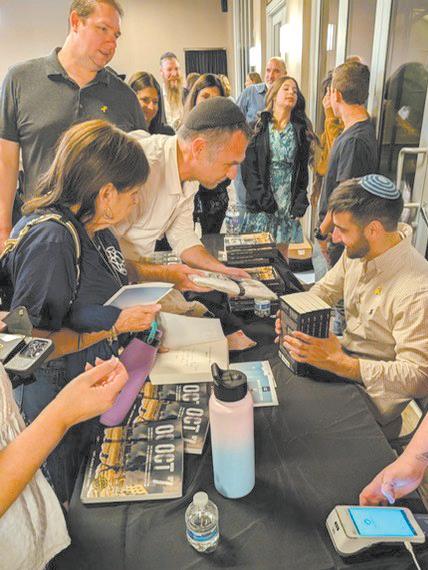
Phoenix food blogger Francine Coles shares a variety of recipes for your Thanksgiving. See page 18.
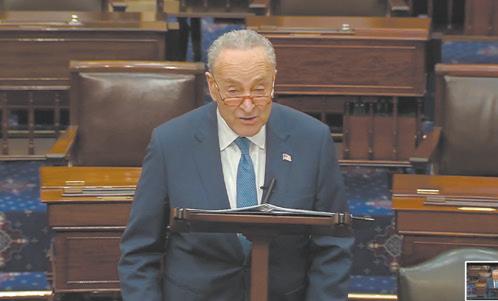


about her Judaism with her fellow council members and speaking out for her rights and beliefs.
SOPHIE STERN
said Jon Meyers, director of ADDPC.
“THE JOB OF A SERVICE LEADER IS NOT TO SHOW OFF AND BE A DIVA, BUT TO CREATE A CONNECTION BETWEEN THE CONGREGATION AND THE DIVINE.”
CANTOR SARAH BOLLT
“I was keeping one foot in there. I was in this unique position where I was taking in Hebrew and putting out ASL, which meant flexing those muscles in a new way. That’s part of how I learned the text of the prayers so well,” she said.
Alicia Moskowitz, Beth El’s executive director, has been duly impressed with Bollt’s community-building abilities, particularly with the kids.
January
January 6
February 3
January 20
February 17
said Jon Meyers, director of ADDPC.
“Our hope is to create and promote opportunities for people to be embraced, become part of the community and find equitable opportunities wherever they might live,” he said.
“Our hope is to create and promote opportunities for people to be embraced, become part of the community and find equitable opportunities wherever they might live,” he said.
Meyers first came to know Stern through her mother, Amy Silverman, who read her personal essays about raising a daughter with Down syndrome on KJZZ, National Public Radio’s Phoenix affiliate station.
in meeting the needs of the community, Wolff said. Bollt has helped the synagogue bring back in-person services on Friday nights.
Meyers first came to know Stern through her mother, Amy Silverman, who read her personal essays about raising a daughter with Down syndrome on KJZZ, National Public Radio’s Phoenix affiliate station.
Meyers was so captivated by the essays that he reached out to Silverman, and the two became friends.
Meyers was so captivated by the essays that he reached out to Silverman, and the two became friends.
That’s how Stern first learned of the open council seat, but there’s no doubt she earned her position, Meyers said.
August 25 September 1 September 8
“We are so pleased to welcome Cantor Bollt to Beth El. She is already showcasing her talents by bringing new ruach and melodies to our prayers and holiday celebrations as well as taking the lead in revamping our b’nai mitzvah program and sharing Jewish music with the children in our Hebrew School and preschool,” she told Jewish News in an email.
August 25
September 1
“She’s a wonderful addition to Beth El,” Stein Kokin told Jewish News. “She has a beautiful voice and a great rapport with kids of all ages. She really is adding a wonderful ability to reach our youth and families. She’s the solid support I needed and a great partner for me in serving the community.”
That’s how Stern first learned of the open council seat, but there’s no doubt she earned her position, Meyers said.
To become a council member, Stern had to apply and demonstrate that she had something valuable to contribute, he said.
To become a council member, Stern had to apply and demonstrate that she had something valuable to contribute, he said.

about her Judaism with her fellow council members and speaking out for her rights
She already has some practice at
“One time, I was in class and someone called me the R-word and I told him not to. The teacher was in the hallway and another student repeated the word,” she said. Rather than letting the situation go, she told her theater teacher, who was able
She already has some practice at
“One time, I was in class and someone called me the R-word and I told him not to. The teacher was in the hallway and another student repeated the word,” she said. Rather than letting the situation go, she told her theater teacher, who was able
“If someone has a disability, saying the R-word is like saying the F-word,”
“If someone has a disability, saying the R-word is like saying the F-word,”
While performing in the musical “Hairspray,” she had another occasion to tangle with the offensive word, which
While performing in the musical “Hairspray,” she had another occasion to tangle with the offensive word, which
“That’s really bad and my friend said it on stage. I was not OK with that, so I went to the director and told her it was a bad word for people with disabilities, but she wouldn’t take it out,” Stern said.

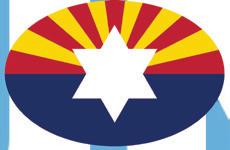
February 3
March 10
March 24
February 17
March 10
March 31
March 24
April 7
March 31
April 21
April 7
May 5
April 21
May 19
September 8
September 15
October 6
September 15 October 6 October 13** October 20
October 13**
Audrey Wolff, Beth El’s board co-president, is happy about what Bollt brings to the synagogue in terms of more musical programs and services for students.
November 3
October 20
November 10
November 3
November 17
November 10
“She plays the guitar and has been teaching kids prayers using sign language,” she told Jewish News.
December 1
Stein Kokin also “appreciates the perspective I bring coming from (Tucson’s Kol Ami Synagogue) a Reform congregation,” Bollt said.
“She’s on the council because she deserves to be on the council,” he said.
“She’s on the council because she deserves to be on the council,” he said. Stern is creating a life and career as a member of her community, which makes her a great addition.
Bollt’s seminary, the Academy for Jewish Religion in California, is transdenominational, so she’s trained for multiple denominations.
Stern is creating a life and career as a member of her community, which makes her a great addition.
Stern graduated from McClintock High School in Tempe last year and now attends Glendale Community College, with a focus on dance. She is a regular performer at Detour Company Theatre, a Scottsdale theatre company for adults with intellectual, developmental and physical disabilities.
“That’s really bad and my friend said it on stage. I was not OK with that, so I went to the director and told her it was a bad word for people with disabilities, but she wouldn’t take it out,” Stern said.
She let her mother know about the conflict and they were able to convince the director of the need to remove the word from the script.
found here so far,” Bollt said.
She spends about 30 hours a week at Beth El, tutors privately and teaches religious school classes online for congregations in other cities.
She let her mother know about the conflict and they were able to convince the director of the need to remove the word from the script.
19
9
23
Heart Can’t Even Believe It: A Story of Science, Love and Down Syndrome,” Silverman’s book about her daughter. When Gesher’s speakers’ bureau, Damon Brooks & Associates, was asked to find a speaker about Down syndrome for an event this spring, Hummell first asked Silverman to speak, thinking Stern might be too young.
8
22
May 5
November 17
June 9
May 19
July 14
June 9
December 15
December 1
“We’ve all enjoyed talking to her. She’s very knowledgeable and offers many skills and a very nice voice,” she said.
August 4
July 14
August 18*
August 4
December 15
Additionally, she’s been a good addition to Beth El’s spiritual team, offering Rabbi Nitzan Stein Kokin invaluable assistance
August 18*
When Bollt moved to Phoenix and took the job at Beth El this summer, she didn’t have far to go. Practically a native of Tucson, having moved there at the age of 11, she worked as an interpreter in the region’s public schools for 11 years, after earning a degree in special education with an emphasis in educational interpreting for the deaf. The move to the Valley felt fairly easy, considering she has family in Phoenix and loves the desert.
Stern graduated from McClintock High School in Tempe last year and now attends Glendale Community College, with a focus on dance. She is a regular performer at Detour Company Theatre, a Scottsdale theatre company for adults with intellectual, developmental and physical disabilities.
In fact, when Stern attended her first council meeting in January, she couldn’t wait to tell people of her involvement with Detour and share information about its upcoming shows.
In fact, when Stern attended her first council meeting in January, she couldn’t wait to tell people of her involvement with Detour and share information about its upcoming shows.
“Phoenix is close to home and familiar, and I really love the community that I
“There’s no question that she is going to thrive,” Meyers said. “She’s very gregarious and passionate about the things that matter to her.”
“My friend Al was next to me when I told the director and he gave me the biggest hug ever and said that he loved me so much,” Stern said. Sadly, Al died in a car crash on Oct. 24, 2021.
Bollt belonged to a few different Jewish congregations, but she received most of her religious formation at Or Chadash, a synagogue similar in size to Beth El. Kol Ami, where she worked before coming to Phoenix, is about twice the size of Beth El. There are good things about big and small communities, but she likes the intimate feeling of a smaller place.
“That was hard; it’s very hard to get emotions out and I was very, very upset,” she said.
“My friend Al was next to me when I told the director and he gave me the biggest hug ever and said that he loved me so much,” Stern said. Sadly, Al died in a car crash on Oct. 24, 2021.
“That was hard; it’s very hard to get emotions out and I was very, very upset,” she said.
On the recent anniversary of his death, Stern made a cake and took it to the crash site.
On the recent anniversary of his death, Stern made a cake and took it to the crash site.
“I don’t know how I did it without crying. I’m so proud of myself,” she said.
“I like knowing everybody who walks in the door — that’s familiar,” she said. JN
“There’s no question that she is going to thrive,” Meyers said. “She’s very gregarious and passionate about the things that matter to her.”
Amy Hummell, executive director of Gesher Disability Resources, agreed that Stern is a good fit for ADDPC because of her ability to self-advocate.
“I don’t know how I did it without crying. I’m so proud of myself,” she said.
For more information, visit bethelphoenix.com.
Stern looks forward to sharing insights
Stern looks forward to sharing insights
Hummell co-hosted a book event with Meyers a few years ago for “My
Amy Hummell, executive director of Gesher Disability Resources, agreed that Stern is a good fit for ADDPC because of her ability to self-advocate.
Hummell co-hosted a book event with Meyers a few years ago for “My
12701 N. Scottsdale Road, Suite 201, Scottsdale, AZ 85254 Phone: 602.870.9470 | Fax: 602.870.0426 | editor@jewishaz.com | advertising@jewishaz.com subscriptions@jewishaz.com | www.jewishaz.com
PUBLISHER
| advertising@jewishaz.com subscriptions@jewishaz.com | www.jewishaz.com PUBLISHER Jewish Community Foundation of Greater
12701 N. Scottsdale Road, Suite 201, Scottsdale, AZ 85254
ADVERTISING SALES CONSULTANT
Phone: 602.870.9470 | Fax: 602.870.0426 | editor@jewishaz.com | advertising@jewishaz.com subscriptions@jewishaz.com | www.jewishaz.com
Jewish Community Foundation of Greater Phoenix
PUBLISHER
SENIOR ACCOUNT EXECUTIVE Jodi Lipson | 602.639.5866 jlipson@jewishaz.com
Jodi Lipson | 602.639.5866 jlipson@jewishaz.com
ASSOCIATE PUBLISHER Rich Solomon | 602.639.5861 rsolomon@jewishaz.com
Jewish Community Foundation of Greater Phoenix
GENERAL MANAGER Rich Solomon | 602.639.5861 rsolomon@jewishaz.com
GENERAL MANAGER
MANAGING EDITOR Mala Blomquist | 602.639.5855 mblomquist@jewishaz.com
Rich Solomon | 602.639.5861 rsolomon@jewishaz.com
MANAGING EDITOR Mala Blomquist | 602.639.5855 mblomquist@jewishaz.com
MANAGING EDITOR
STAFF WRITER Shannon Levitt | 602.639.5854 slevitt@jewishaz.com
SUBSCRIPTIONS 602.870.9470 x 1 subscriptions@jewishaz.com
ADVERTISING SALES CONSULTANT Jodi Lipson | 602.639.5866 jlipson@jewishaz.com
SUBSCRIPTIONS 602.870.9470 x 1 subscriptions@jewishaz.com
SUBSCRIPTIONS 602.870.9470 x 1 subscriptions@jewishaz.com
GRAPHIC DESIGNER Ebony Brown | 410.902.2333 ads_phoenixjn@midatlanticmedia.com
GRAPHIC DESIGNER Ricki Urban | 602.870.9470 X 2 advertising@jewishaz.com
STAFF WRITER Shannon Levitt | 602.639.5854 slevitt@jewishaz.com
Mala Blomquist | 602.639.5855 mblomquist@jewishaz.com
STAFF WRITER
Shannon Levitt | 602.639.5854 slevitt@jewishaz.com
GRAPHIC DESIGNER Ebony Brown | 410.902.2333 ads_phoenixjn@midatlanticmedia.com
Heart Can’t Even Believe It: A Story of Science, Love and Down Syndrome,” Silverman’s book about her daughter. When Gesher’s speakers’ bureau, Damon Brooks & Associates, was asked to find a speaker about Down syndrome for an event this spring, Hummell first asked Silverman to speak, thinking Stern might be too young.
5
12
November 8
They decided instead that Stern should tell her own story; it’s a real bonus that she is not afraid of public speaking.
October 18** October 25
They decided instead that Stern should tell her own story; it’s a real bonus that she is not afraid of public speaking.
19
10
“It’s not the same when someone tries to tell a person’s story for them,” Hummell said.
November 15
November 22
“It’s not the same when someone tries to tell a person’s story for them,” Hummell said.
24
14
12
26
December 6
December13
December 20
Additionally, helping people with disabilities find jobs was one of the reasons for acquiring the bureau. Unemployment in the disability community is upwards of 75% and of that percentage, 75% are ready, willing and able to work — but haven’t been given the opportunity, Hummell said.
9 August 23* September 6 September 20 September 27 October 11
Additionally, helping people with disabilities find jobs was one of the reasons for acquiring the bureau. Unemployment in the disability community is upwards of 75% and of that percentage, 75% are ready, willing and able to work — but haven’t been given the opportunity, Hummell said.
“People have it in them to speak up but don’t know how, and often they’re not cheered on. Sophie has family support
“People have it in them to speak up but don’t know how, and often they’re not cheered on. Sophie has family support



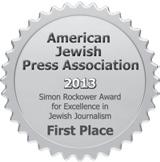

expecting their first child in December. When they awoke again, later on Oct. 7, they realized Shiran’s nightmare had become a reality.
Cohen ran to their home, a 15-minute walk from his in-laws where they had spent the night. “I ran into my house, opened my phone and called my commander,” said Cohen. “He told me that something bad was going on right now and didn’t know exactly what it was but to get my gear ready.”
At the time, Cohen didn’t belong to any unit that would be called up during wartime, but he knew he would find a way to participate if war broke out. Shiran was told to report to duty immediately. When they arrived at the crowded IDF base, Cohen was told by an officer that they didn’t have any equipment to give him because they were at 180% enlistment.
Cohen ran to a building on the base called the Duvdevan House, which contained a mannequin dressed like a combat soldier with all the latest equipment. The mannequin was there to show donors how they equipped the special unit for war and to raise funds. Cohen left the building with all the needed equipment and found one of Duvdevan’s reserve units to join.
Within weeks, he found himself on the frontline entering Gaza.
“I’m always proud to say, we started as 15 and we ended as 15,” he said about the men in his unit. “It was amazing to see our bond together during that time.”
Part of the work his unit did was making sure an area was clear of any terrorists.
He said that many of the houses they searched contained ammunition or hand grenades. One he entered looked like it belonged to his grandparents. On the wall, he expected to see a photo of a grandmother holding her grandchild. Instead, he saw a photo hanging on the wall of an older woman holding an assault rifle.
Another day, the men were exhausted and had entered a house to see if anyone was inside.
Cohen repeatedly played something over in his mind. “My wife told me right before we entered Gaza, every time we are tired, every time we are exhausted, this is the time to concentrate in war,” he said. “Unfortunately, all the bad things happen while you’re not paying attention.”
He kept searching the home and found a certificate that the former owner was a doctor. A fellow unit member said, “You see, Kuno, it’s a doctor, you can have a rest.” But Cohen kept searching.
He found a magazine from an AK-47 rifle. He then suggested they move one of the beds. Underneath the bed, they saw two bombs, each more than four feet in length and connected to an electrical wire. It was a booby trap set for anyone
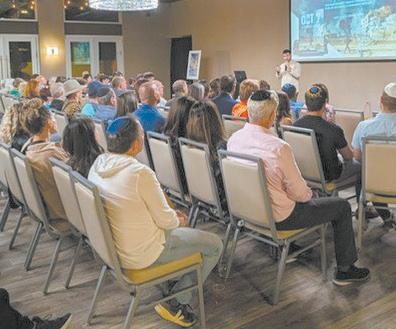
that entered the house.
“By being there, I understood two things,” said Cohen. “First of all, you have to listen to your wife. Second of all, everything can change in seconds. You can think that everything is fine, you can rest, but we have to do as much as we can to be aware, to concentrate while we’re fighting.”
The team decided to put a small amount of TNT to trigger the bombs to make sure that the trap injured no other soldiers. When they went back after the explosion, the house was in ash and three houses surrounding it were totally destroyed.
Because of Shiran’s position in intelligence, she often knew where her husband was being sent before he did.
“What she’s been through is sometimes much more than me because being able to know everything, and where your husband is, to be aware of all of the risks that’s going on and not be able to do anything, it’s very hard,” said Cohen. Rarely was he able to speak to Shiran directly through a classified phone.
There was another instance where his unit was given intel that there was a school that terrorists had infiltrated, but it was also full of students and teachers.
The IDF soldiers called out for them to leave the school, but no one did.
They deployed a drone to fly over the school and soon realized why no one was leaving. There were Hamas armed guards at all the doors.
“More than that, one of the Hamas guards took his AK-47 and shot a fiveyear-old kid,” said Cohen. “We understood at that moment that we had to kill those guards, not only for our sake but also for the civilians’ sake.”
Another guard went up to the roof and, knowing the soldiers were watching, held a small child over the edge of the
building. Behind the guard was someone holding a camera, taking a video.
“It had almost seemed like he wanted us to take that shot,” recalled Cohen. “Well, we did take that shot. After that, we were able to evacuate all the other civilians from there and get the other guard that was there. I’m sharing that because I want you to know what we were dealing with through this time.”
Throughout his presentation, Cohen shared photos, videos and recordings of what life was like for him and his unit during the war. He said that amid the horrors of war there were joyful moments, like when two men in the unit received the news about the birth of their sons.
“I want you to hear what names they are choosing for their sons,” he said. “Oz which means ‘strength’ and Ori Lavi, Ori which means ‘my light’ and Lavi, which is ‘like a lion.’”
He would also stop during his talk to tell a brief story of a friend who died in the war, how they knew each other, where he and Shiran had met this individual and a little bit about their personality.
On the last pages of his book, Cohen listed 27 of these fallen soldiers, with their date of death and where it occurred, such as “fell in battles for the Gaza Envelope communities” or “fell in battle in southern Gaza.”
“I decided, when I left Gaza, to share the story that some of my friends, some who weren’t able to share their own story; to take all my journals, all my notebooks that I wrote and to publish it as a book,” he said. “I truly feel that it’s not about me. This is about our people, our unity, the people that we love, but also about the amazing future that we’re going to have.” JN
For more information, visit elkana-cohen.com.

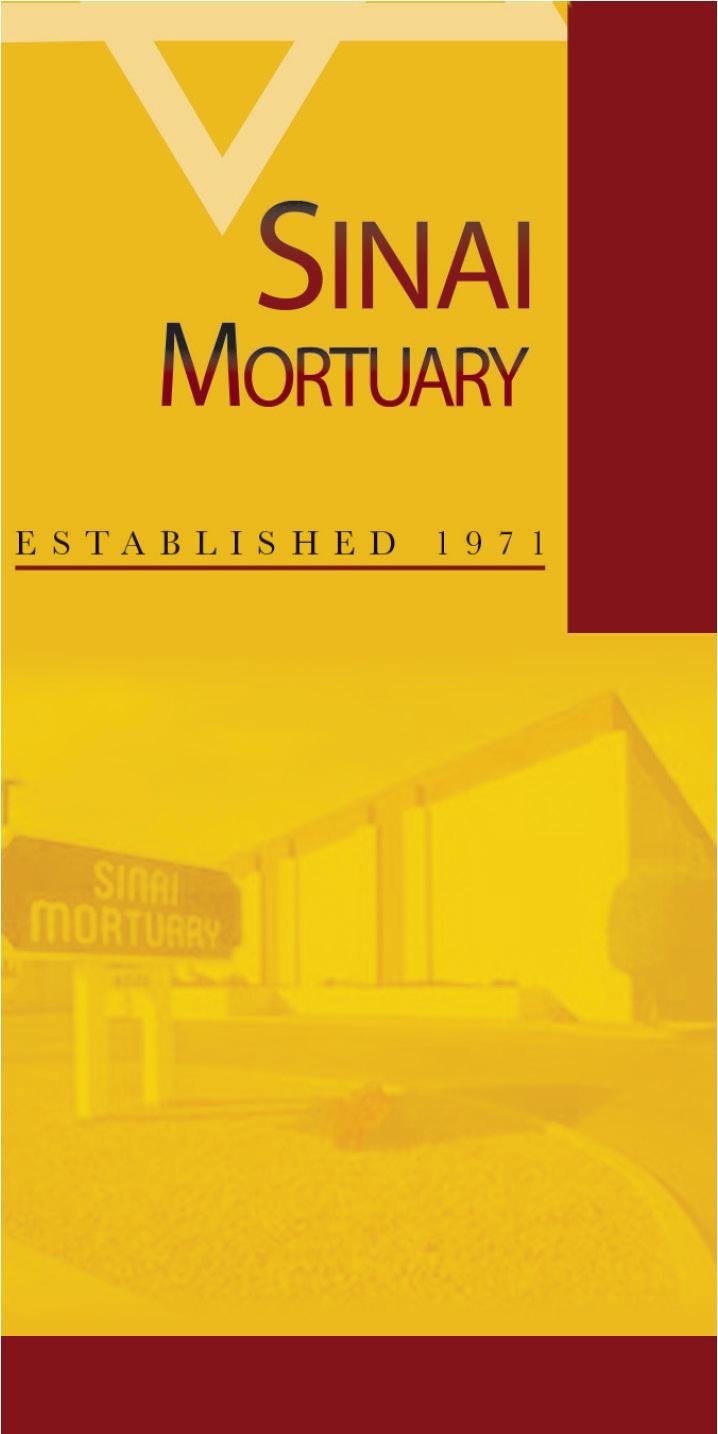

SHANNON LEVITT | STAFF WRITER
Adam Kwasman is the newest member of the Scottsdale City Council and its first Orthodox Jew following the Nov. 5 election. He wore his kippah and tzitzit “proudly” in his campaign literature and was always happy to talk to local media about it. After the election, he discussed how his faith would be important to his civil service.
“I am such a proud Jew, and my Judaism guides every drop of my being, from how I eat and spend my time, to how I act as a husband and a father, to how I conduct my business. I will do all I can to be a ‘shaliach’ for the light of Torah and Kiddush Hashem at the City Council,” Kwasman told Jewish News in an email.
Kwasman and his family are members and volunteers of Congregation Beth Tefillah in Scottsdale and Chabad of Phoenix. He also heads the Arizona chapter of the Republican Jewish Coalition with his wife, Orit, and said that his conservative bona fides could be put to good use on the city council.
Last December, Kwasman, a former Republican state legislator, announced his run for the empty council seat on “The Conservative Circus” podcast. He told host James T. Harris that he’s running because of the importance of local politics.
“You and your wife care more about what is happening on the NextDoor app than about what squabbles are happening in Washington, D.C.; local is where it’s at,” Kwasman explained to Harris about what drove him to choose a local political office to run for.
While Kwasman once had political ambitions beyond the state — he ran for a U.S. Congressional seat in 2014 but
lost in the Republican primary — he said he now believes local politics is the most important thing.
“The older I get and the more kids I have, the more I realize what happens in my neighborhood matters far more than anything else,” he said.
Kwasman believes that “Jews need to stand up in leadership roles wherever they can” and emphasizes that Scottsdale is a great city for its Jewish residents.
In his new role, he hopes to “promote Scottsdale’s Jewish infrastructure.” His goals include fostering Jewish life through Torah learning, kosher food options and fighting against antisemitism.
“Adam’s election as the first observant Jew on the Scottsdale City Council is truly a milestone moment for our Arizona community,” Beth Tefillah Rabbi Pinchas Allouche told Jewish News in a text.
Allouche touted the “fresh perspective” he believes that Kwasman will bring to his new role, one “rooted in divine values.”
Kwasman was honored to have his rabbi’s support and encouragement and “will certainly continue to seek his counsel during my time in office,” he said.
“Everyone at the Congregation Beth Tefillah, as well as the greater Chabad community, including, but not limited to, Rabbi Yossi Levertov, has been tremendously supportive. The outpouring of well-wishes over the past few days has been truly humbling, and I’m so grateful,” he said.
Allouche hopes that Kwasman will help “deepen connections between our faith communities and strengthen the bridges of understanding and unity that we all cherish,” he said.

Kwasman’s other priorities once in office are public safety and fiscal responsibility, he said.
While announcing his candidacy on Harris’ podcast last December, Kwasman asserted that the council, as it was then constituted, didn’t represent those conservative values. He doesn’t like the changes he’s seen over the last few years, and would like to see “a lot more Scottsdale and a lot less San Francisco.”
He said that although he loves Scottsdale, the city “is starting to look a little dingy, not the city that we know,” and spoke about the problem of homelessness that now exists everywhere. Additionally, “our
NextDoor app is blowing up with both petty and violent crime.” Kwasman has four children and said that he wants them to be able to play in the park safely as he did when he was a child.
“I want to protect them from panhandling or someone who’s clearly not from here and up to no good,” he told Harris.
He looks forward to working with the newly elected mayor, a fellow conservative, especially on budget issues.
“Fiscal accountability is a promise to the voters that must be kept. I look forward to leading on that issue alongside Mayor-elect (Lisa) Borowsky,” he said. JN


















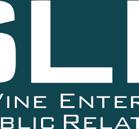

SHIRA TANZER | CONTRIBUTING WRITER
When Donald Trump officially became president-elect early on the morning of Nov. 6, voters across the country had varying reactions. For Jewish students on Arizona State University’s (ASU) campus, the disappointment or relief felt personal for them as Americans, but also as Jews living during the IsraelHamas war and the rising wave of antisemitism on college campuses.
For Alex Walter, a senior at ASU, the most important issue for him was foreign policy. He chose to vote for Trump over Vice President Kamala Harris because to him, its essential for America to have strong allies like Israel to create a more peaceful world. Walter explained the last time Trump was President he proved his administration could handle that task.
“We got the historic Abraham Accords, which was a major breakthrough in terms of negotiating peace in the Middle East, where you saw, for Arab countries, normalizing relations with Israel, and on top of that, I thought that there was much harsher policy towards other bad actors like Iran, Russia and China,” he said. Foreign policy was also the leading
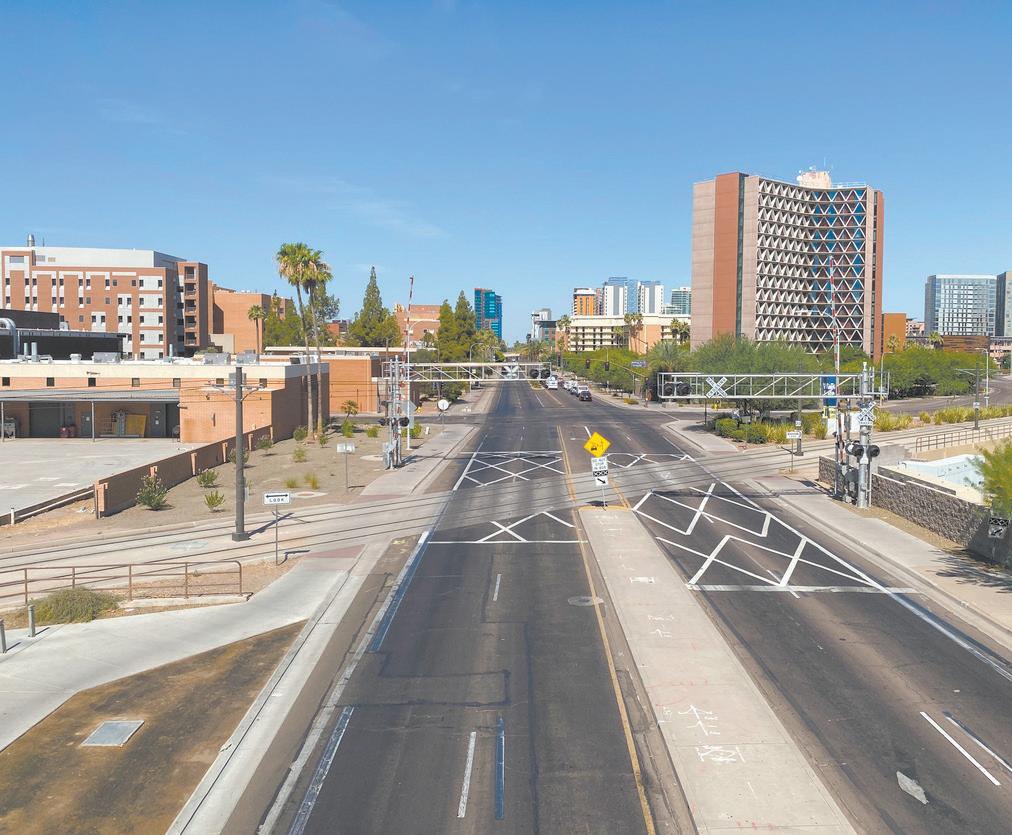
factor in ASU junior Hana Dolgin’s vote, along with economic and social issues, but to her, the situation pointed to Harris as the best candidate. Dolgin described how after the Israel-Hamas war began, the vice president made her stance on the issue clear.
“After Oct. 7 happened, she right away spoke out about it. And she also has continuously been speaking out about all the different things that have been happening,” she explained.
Harris’ marriage to Doug Emhoff, a Jew, was also a sign to Dolgin that her




administration would be a safe place for Jews in America. Emhoff visited Hillel at ASU in 2023 to speak to students about rising antisemitism.
Hunter Quick, a junior at ASU, voted for Harris as well, but made his decision largely based off each candidates’ perspective on LGBTQ+ and abortion rights. He says Israel is an important topic for him as a Jew, but there were simply more pressing issues that carried his vote. Quick said Israel’s funding from America shouldn’t be something they are completely reliant on, and therefore wasn’t a large factor in his vote.


“They need to start standing for themselves without American funding as we [America] are probably not always going to be here,” he explained.
For Walter, aid distribution wasn’t nearly as important as ensuring the safety of Israelis and the Jewish homeland. He feels like the Biden administration’s actions towards the Houthis and Iran over the past four years made Israel less safe and “laid the groundwork for an attack, like Oct. 7, unfortunately.”
Dolgin also prioritized the safety of Jews worldwide when voting, considering Trump’s previous comments about admiring Hitler and WWII generals when casting her vote.
“I don’t think he’s going to protect the Jewish people; I think he’s going to put his own needs ahead of our needs,” she stated. Protecting the Jewish people, especially on campus, was a topic that many were thinking of on Nov. 5. Ravital Shalomov, a freshman at ASU and a registered Republican, said the results of the election likely won’t change much for her on campus.
“At the end of the day, if people look at you and they’re like, you’re a Jew, some people won’t like you. And that’s just the truth whether Trump or Kamala is going to be in the presidency, it doesn’t matter,” she said.
Dolgin echoed the sentiment, explaining how she thinks the people who have threatened Jews on campus in the past would not have voted for either Trump or Harris, but likely a third-party option like Jill Stein of the Green Party.
Meanwhile, Walter is hopeful about the Trump administration’s ability to protect Jewish students.
“I feel safe at my university and I’m hoping that continues with the change in administration,” he said. JN
SHANNON LEVITT | STAFF WRITER
At the beginning of her film and television production class last year, Layla Heeres told two friends that if they let her take the lead on their class documentary project, she would win them an Emmy. When they heard her self-assured take they might have grinned, thinking she was joking in her good-natured way. But it was no joke.
The Corona Del Sol High School student made good on her promise, and two months ago, the trio had the satisfaction of receiving a junior Emmy for best shortform non-fiction documentary.
On Saturday, Sept. 21, Heeres, Ev Ellis and Connor Taylor received their prize at the Rocky Mountain Southwest Chapter of the National Academy of Television Arts & Sciences (NATAS). It is one of NATAS’ 19 official chapters that recognizes outstanding journalistic work using the visual arts by high school and college students.
Heeres usually prefers making fun and light-hearted content, but knowing
that the big class assignment would be a documentary, she wanted to focus on something less whimsical, something with which she felt a literal kinship.
Telling the story of her father’s Lost Tribe of Arizona motorcycle club seemed to make sense, given the amount of antisemitism around the globe, her pride in being a Jew and the fact that those in the club “have been supporting me since I was little and doing amazing things for the community. They’re some of the friendliest people you’ll ever meet,” Heeres told Jewish News.
“Finding the Lost Tribe” begins with Max Heeres, Layla’s dad, mounting his motorcycle, a stuffed animal on the back, while “Take It Easy,” the Eagles’ classic road tripping song, plays in the background. Interspersed with footage of Max and his club members riding down Arizona’s highways are interviews explaining how the club began, what it means to its members and the
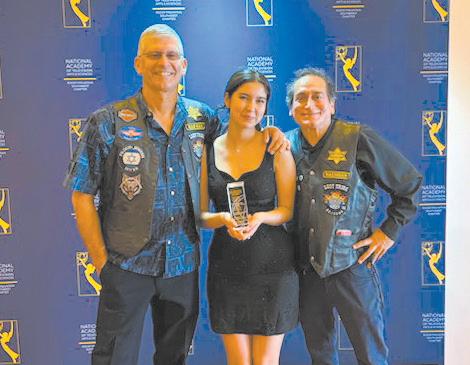
Beth Ami Temple


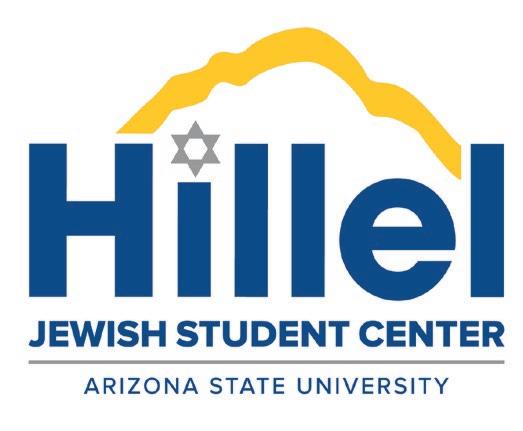

Invites you to join us at 7:00 PM, Friday, Dec. 6, 2024 for Shabbat Services with Guest Speaker Rabbi Je rey Schesnol
Learn about the $40 mm state-of the art Hilton Family Holocaust Education Center to open in Phoenix April, 2027
Shabbat Services held in the Unitarian Universalist Congregation 4027 E. Lincoln Dr. Paradise Valley, AZ 85253 For information: www.bethamitemple.org bethamitemple35@gmail.com 602-956-0805

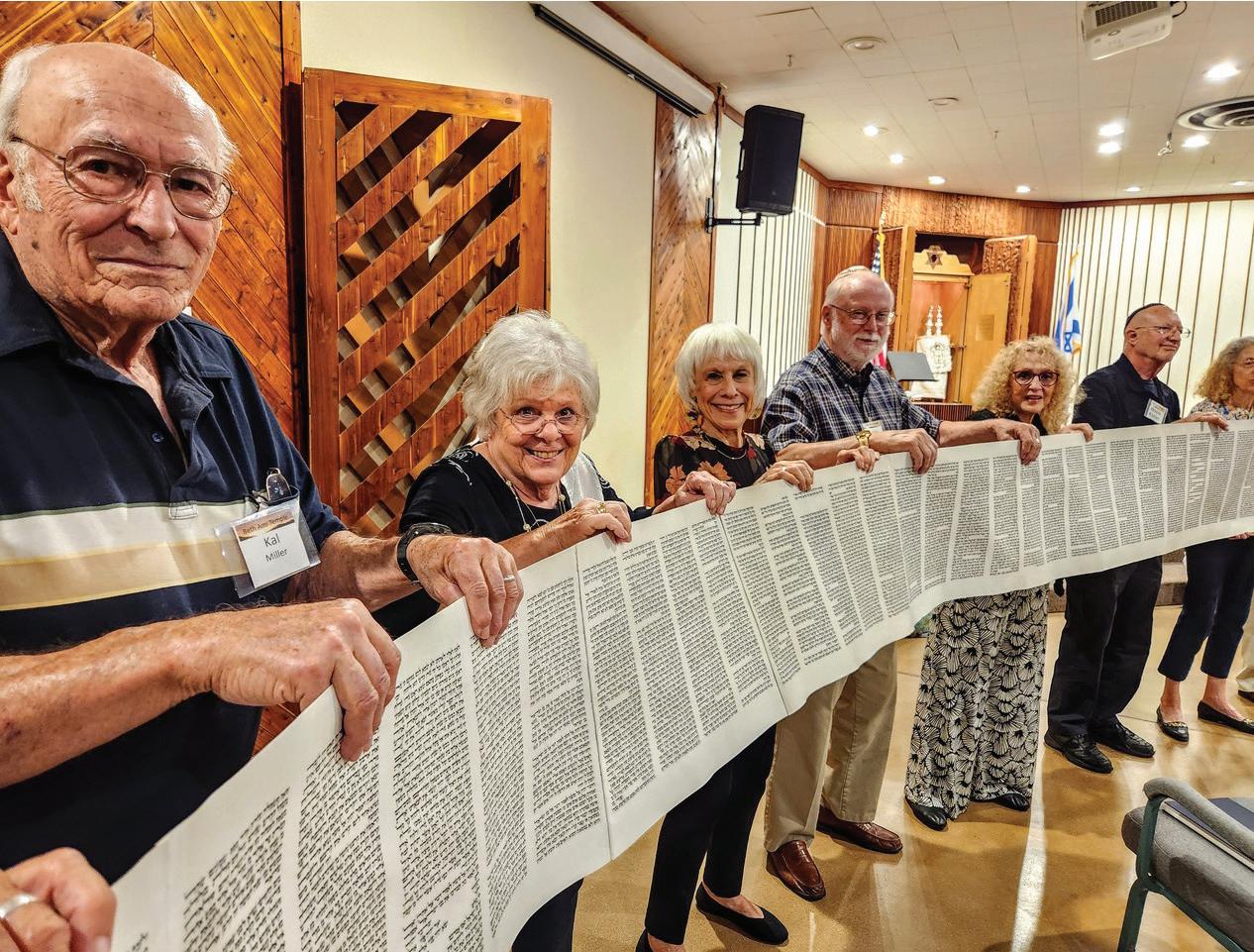
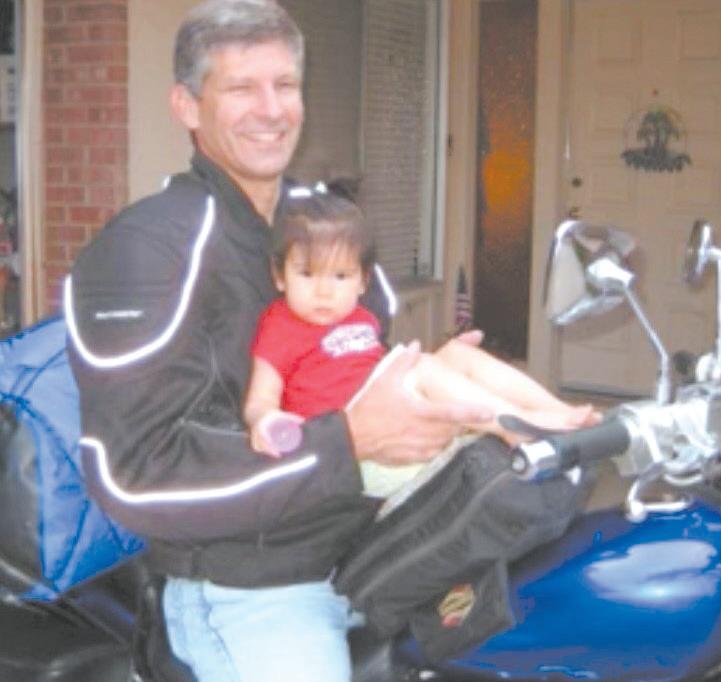
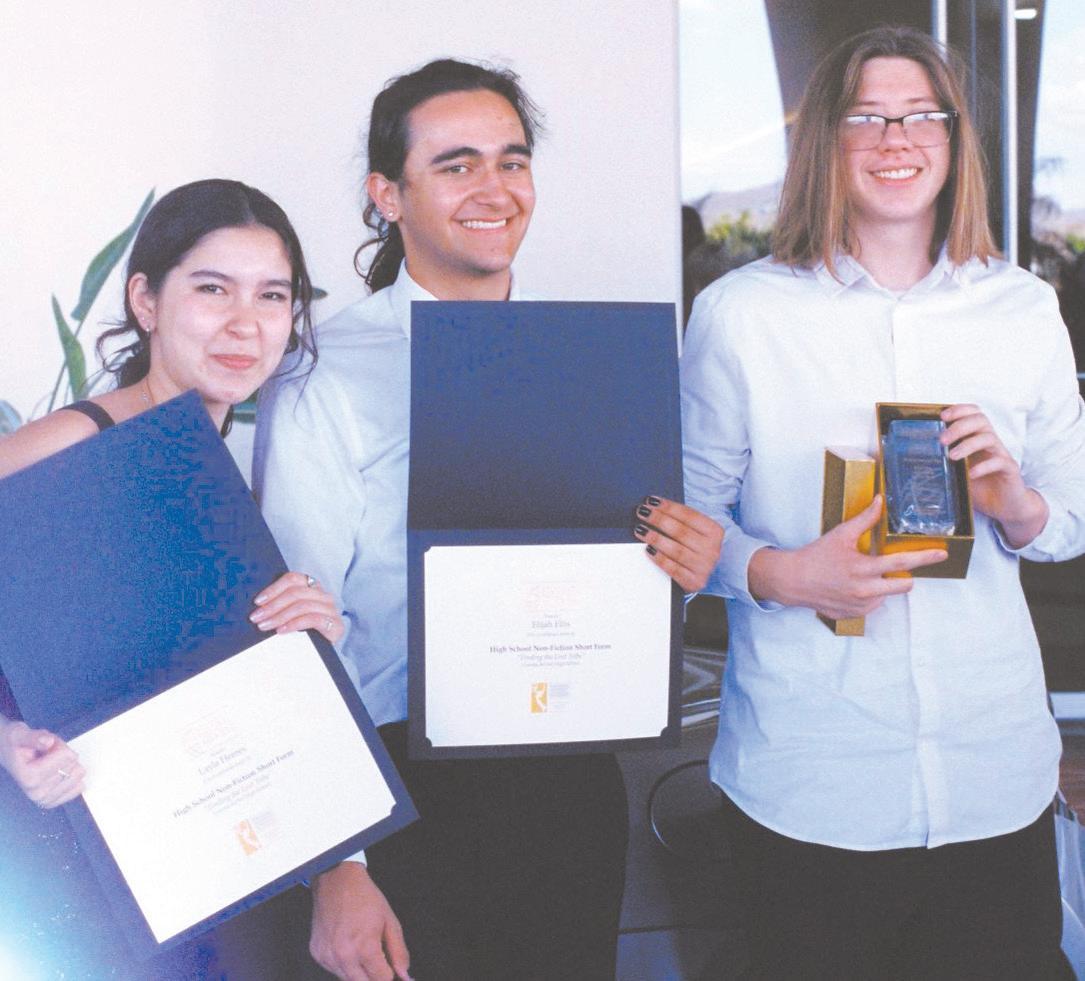
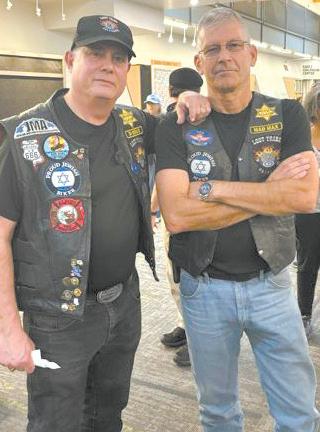
importance of Ride 2 Remember (R2R), an annual Jewish motorcycle club event memorializing the Holocaust.
The elder Heeres discovered his first Jewish motorcycle club in 2011 while working in Virginia, which is also where he attended his first R2R. He’s missed only one of the annual rides since, due
to the COVID-19 pandemic. He was surprised to learn there was such a thing as a Jewish motorcycle club and said that’s pretty much everyone’s first response.
In the film, Lost Tribe member Nevin “Nachman” Heitner said he first heard about the club from members of his synagogue. He was surprised and asked, “What’s a Jewish motorcycle club? I lived in New York and Philadelphia and never


Present Oren Kessler
Sunday, January 5, 2025 4:30 PM
12701 N Scottsdale Rd, Scottsdale AZ

Oren Kessler will present on Palestine 1936 his rst major book on the Great Arab Revolt of 1936-1939 in British-controlled interwar Palestine, revealing how Jewish-Arab relations were altered forever after. Using English, Hebrew and Arabic sources it nds human stories in the battle for the Holy Land, providing rare insight into the grim pattern of con ict that grinds on today.
Namaste and Shalom: A Virtual Tour of Jewish India
Rahel Musleah
January 12, 2025
Take a trip to Jewish India! India's Jewish heritage is a rich cultural and historical saga that stretches from biblical times until today. Explore each of India's Jewish communities as we visit sites and synagogues in Bombay, Calcutta and Cochin. Led by Rahel Musleah, who was born in Calcutta, the seventh generation of a Calcutta Jewish family that traces its roots to 17th-century Baghdad.
PASSAGES is BJE’s annual fundraising learning series. Your support enables the BJE to continue to promote Jewish life and literacy from Jewish Baby University, to Hebrew High, and Adult learning.

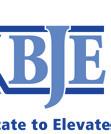
heard of a Jewish motorcycle club. Jews aren’t supposed to ride motorcycles, right?”
The club is part of the Jewish Motorcyclists Alliance (JMA), whose stated mission is to create a global environment whereby members of the Jewish faith who ride motorcycles can get together in person and/or virtually to talk about anything that’s of concern to the Jewish community at large, as well as issues specifically concerning motorcycle riding.
The Lost Tribe has more than 100 members, about 20 of whom regularly ride together. Many of them make an appearance on screen. The club’s Facebook page connects riders with other Jewish motorcyclists from around the country.
The documentary’s focus soon turns to the R2R and its mission to remember the Holocaust. Max Heeres is the son of a Dutch Holocaust survivor who, at 14, escaped the fate of his family and joined the Dutch underground and then became a marine to fight the Nazis.
“When I ride in the R2R, I ride in his honor,” Heeres told Jewish News.
He said the annual event is a fun gathering for meeting new friends while also being very emotional, especially when Holocaust survivors speak to the gathering. The main affair for the weekend is a ceremonial ride, consisting of a few hundred motorcycles riding across a major city with Israeli flags blazing out behind them and a police escort.
“It’s a show of force because everyone gets to see us, and 200 motorcycles riding together looks like 1,000. It’s very exciting,” Heeres said.
The next R2R will take place in Charlotte, North Carolina in June.
Even though Heeres, the filmmaker, is “a little too paranoid to get on” the back of her father’s bike much, she admires
and appreciates her father’s club for the community it creates. She’s even planning on joining him in Charlotte this summer.
“I love how it’s a place where people meet other Jews and connect with them,” she said.
Ellis (who is also Jewish) and Taylor, her “ride or die(s),” have been making funny movies with Heeres and doing the school’s weather broadcast since they were freshmen.
“For this project, we wanted to make something serious that would make a difference,” she said.
Their teacher suggested it was good enough to be nominated for the shortform Emmy. The class also won a separate production award. Heeres plans to study journalism at Arizona State University in two years. She loves anchoring and editing the school’s regular broadcasts, but making this documentary turned up her passion for the craft.
“Maybe I’m biased because I love the Lost Tribe but I truly felt my passion for documentary filmmaking,” she said.
Her dad was excited when she told him about her choice of his club for the documentary, though he wasn’t certain about the song she chose.
“I told him to trust me on that one,” she said.
He also marveled at her editing skills.
“I’m proud of how she could sift through all the footage,” he said. “It all lived in her head before it happened.”
The younger Heeres comes from a mixed-faith household, with a Thai Buddhist mom. Thus, making this film helped her connect to her Jewish heritage, she said.
“It can be confusing knowing who I am, but I found my purpose in making this documentary and I love my community,” she said. JN
To watch “Finding the Lost Tribe,” visit https:// shorturl.at/dDuch.
In recognition of the 23rd anniversary of Sept. 11, Jewish National Fund-USA (JNF) collaborated with synagogues and community partners in Scottsdale and Phoenix to host a series of 9/11 ceremonies.
The events honored local police and security officers who serve the community, educated congregants and teens about the terrorist attacks that changed the nation and reaffirmed the shared values between Israel and the United States.
On Sept. 9, JNF collaborated with Mountain Region BBYO and the Valley of the Sun Jewish Community Center to present building security members and Scottsdale police officers, including Scottsdale Police Chief Jeff Walther, Commander Chris Watson, and Cache, a dog from the department’s K9 unit, with a plaque featuring JNF and KKL-JNF’s 9/11 Living Memorial in Jerusalem — the only commemorative site of its type outside of the U.S. that features all the names of those who were killed on 9/11 and established in 2009.
“It was an honor participating in the Night of Gratitude in partnership with Jewish
National Fund-USA and the JCC,” said Tess Perez, BBYO Mountain Region director, in a press release. “Our BBYO teens felt it is more important than ever to show appreciation to those that keep us safe and allow us to be our Jewish selves openly and outwardly, and that was evident with the over 80 teens that joined us on Monday night. Our JCC security team and Scottsdale Police Department deserve that recognition today and every day!”
“It was a terrific evening, as we had the opportunity to acknowledge, thank and appreciate the men and women whose work allows us to do what we do for the community,” said CEO of Valley of the Sun JCC Jay Jacobs, in a press release.
JNF’s Arizona team also partnered with Temple Beth Tefillah in Scottsdale to honor their security officers and Temple Solel in Paradise Valley to honor the leaders of the security company for keeping their congregations safe every day.
“Temple Solel was proud to commend Jimmy and Sherry Wasson, principles of Wasson Protection,” said Temple Solel Rabbi
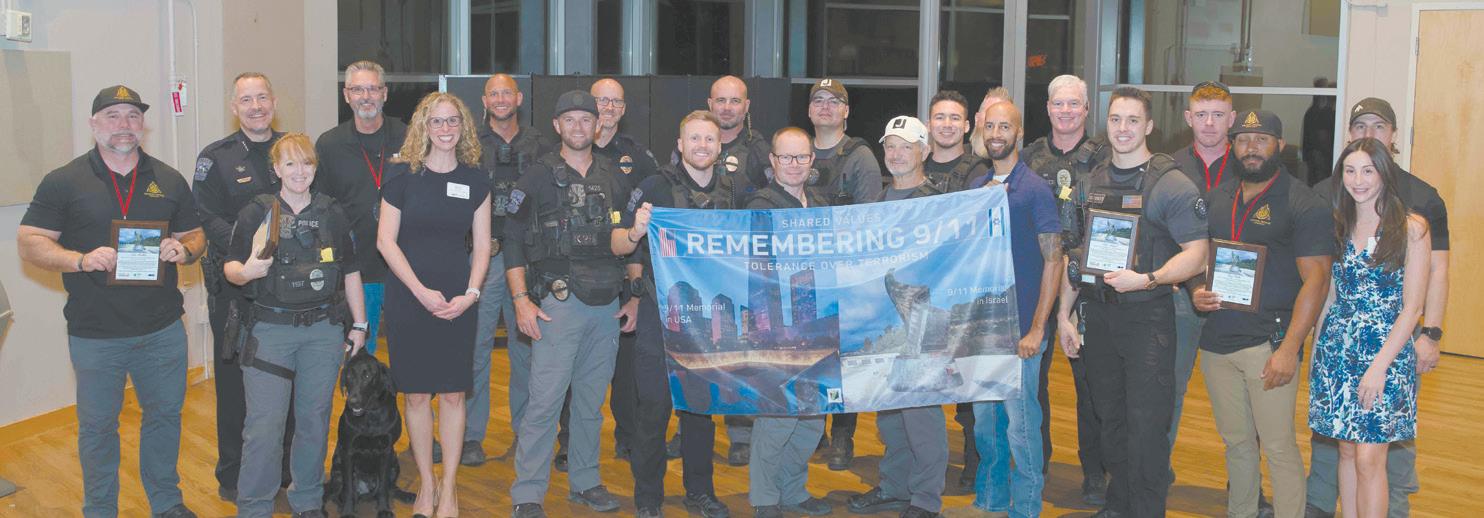
John Linder in a press release. “Wasson Protection serves many synagogues on a daily basis. Recognizing Jimmy and Sherry, themselves people of deep faith, and the work of their security personnel, was a meaningful way of letting them know how grateful the Temple Solel and greater Jewish community is for their devotion and having our backs. We thank Jewish National Fund-USA, with whom we are proud to partner throughout the year, for the honor of hosting this 9/11 commemoration.”JN
The University of Arizona will establish the Edwin and Alma Lakin Holocaust, Human Rights and Comparative Genocide Endowed Chair in the Arizona Center for Judaic Studies with a $2 million gift commitment from a lead anonymous donor and additional gifts from Tucson community members.
The creation of the endowment was also supported by prominent Tucson-area and U of A philanthropists Paul and Alice Baker.
“I am deeply grateful to the Tucson community members who have funded the Edwin and Alma Lakin Holocaust, Human Rights and Comparative Genocide Endowed Chair,” said Lori Poloni-Staudinger, dean of the College of Social and Behavioral Sciences, which houses the Arizona Center for Judaic Studies, in a press release. “Their vision and generosity will broaden the college’s expertise and outreach on these crucial topics.”
The focus of the Lakin Endowed Chair will be Holocaust studies research, teaching courses related to the Holocaust, human rights, and comparative genocide, and engaging in significant community outreach. The inaugural holder is Leonard Hammer, a senior lecturer in the Arizona Center for Judaic Studies.
Hammer will serve as a point of contact for collaborations between the Jewish communities in Tucson and Southern Arizona. He will also support local educators in implementing statemandated Holocaust education, participate in genocide awareness initiatives, and collaborate with colleagues across various disciplines and academic units at the university.
“I am eager to take on the responsibilities of this chair, especially at such an important juncture in both world and Jewish history,”
Hammer said in a press release. “I am both honored and grateful to carry on the legacy of
Eddie and Alma Lakin, specifically to cultivate the means for proper Holocaust memorialization and education, as an inroad to foment better insights into future atrocity prevention.”
The late Edwin and Alma Lakin, for whom the chair is named, wanted to preserve Jewish history and memory and cultivate critical thinking regarding the origins of human cruelty, Graizbord said. They were among the founding supporters of the United States Holocaust Memorial Museum in Washington, D.C. They also spearheaded and underwrote the establishment of the Edwin & Alma N. ’51 Lakin Holocaust Library & Resource Center at Albright College in Reading, Pennsylvania.
Stuart Mellan, retired CEO of the Jewish Federation of Southern Arizona and a longtime community partner of the Arizona Center for Judaic Studies, expressed his enthusiasm for the creation of this new endowment and the
The Worldwide Shabbat Project took place over Nov. 15-16 in more than 1,000 cities across the globe, including in Greater Phoenix.
“This year’s Arizona activities included a challah bake, shabbat dinners, synagogue services, lunches and havdalah events all over town, mitzvah (good deed) auctions dedicated to hostages and soldiers in Israel, and local people in need of healing,” said Director of the North American Shabbat Project Robin Meyerson.
Local Jews across the Valley got to work hosting and matching people to make the weekend a success.
In Scottsdale, private families opened their homes for Shabbat guests, while in Phoenix, Ohr Hatorah synagogue hosted a festive gourmet Friday night Shabbat dinner organized by Esther Bronsteyn.
Yael Roizman set up learning groups in
Valley homes using Shabbat Project Rabbi Dr. Warren Goldstein’s book “Shabbat: A Day to Create Yourself.” Rachel Isaacs set up a learning group for women using the same book at a local restaurant. Congregation Beth Tefillah Rabbi Pinchas Allouche and his wife hosted a gourmet Shabbat dinner in Scottsdale, as well as services, a kiddush lunch, afternoon classes and children’s programming. Meredith Ryan matched families who want to keep the full Shabbat.
Many women told Meyerson that this tradition has helped them keep Shabbat at home and connect more to their synagogue communities.
“I am going to keep Shabbat at home, light candles on time, say a blessing over the bread, I won’t do social media, driving, movies or shopping,” one told Meyerson.
The highlight for this year’s Shabbat Project was the creation of four new films including a
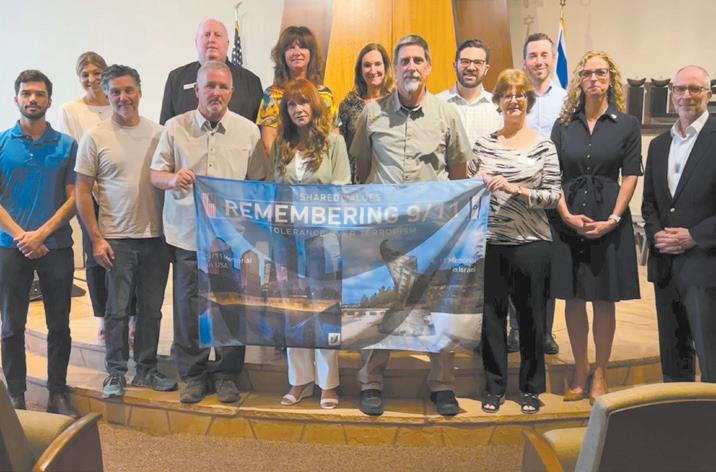
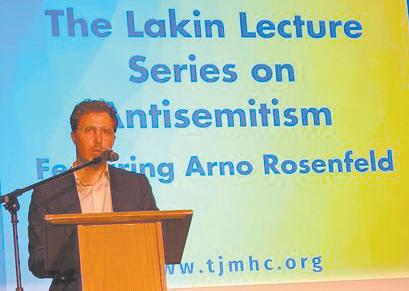
work it will support in a press release.
“It’s been thrilling to see the center grow and thrive through the years. This newly expanding area of focus will be incredibly relevant not only in academia but also in the center’s outreach to the community, where it has distinguished itself and made such a powerful impact.” JN

Shabbat commercial which already has more than two million views. The goal of the films is to show the beauty and benefits of Shabbat and center Jewish tradition
“Across the country, as antisemitism has
exploded on campuses, Jewish students are holding on fast to Shabbat, a beacon of light reminding Jews across the world what it means to be a Jew,” said Meyerson. JN
CONTINUED FROM PAGE 9
Phoenix Hebrew Academy embarks on strategic planning process
Phoenix Hebrew Academy (PHA) recently announced the launch of a comprehensive strategic planning process to guide the school through the next phase of growth and development. This initiative, in partnership with Scott Goldberg Consulting (SGC), is designed to ensure that the school continues to serve the community effectively and prepares for a thriving future.
The strategic planning process, supported in part by the Center for Jewish Philanthropy of Greater Phoenix, will engage key stakeholders, including parents, faculty, board members and community leaders. The effort will be led by PHA’s Strategic Planning Committee, chaired by Dr. Shalom Fialkoff.
The lay leaders who will serve on the committee include Alyssa Daskal, Dr. Kathryn Kanner, Steve Bangiyev and Dr. Mel Bottner.
“We are excited to work with Scott Goldberg Consulting to reflect on the strengths and opportunities of Phoenix Hebrew Academy,” said Rabbi Baruch Harris, PHA head of school.
“This process will allow us to develop a strategic plan that aligns with our mission and addresses key areas for growth in the coming years.”
The phases of the planning process include: data gathering, goal setting and implementation. The first phase will include interviews, surveys and focus groups. Based
with disabilities featured in December
In recognition of the United Nations International Day of Persons with Disabilities, Damon Brooks & Associates (DBA) will host its second speaker showcase where conference organizers will find their next keynote presenter. DBA is a subsidiary of Gesher Disability Resources.
On Tuesday, Dec. 3, DBA’s Speaker Showcase will be a virtual gathering with a purpose, said Amy Hummell, executive director of both DBA and Gesher. Using virtual technology, DBA aims to connect with thousands
of industry professionals and decision-makers, delivering an experience that emphasizes the significance of embracing diversity and promoting inclusivity.
The event’s format will feature a one-hour, facilitated discussion that brings together four DBA professional speakers. Each speaker will present a condensed version of their talk in an eight-minute segment. This approach ensures attendees are exposed to diverse perspectives based on the personal experiences of speakers who live with a disability.
A year after the 2023 Hamas attacks in Israel, many in the Jewish community marked the anniversary through rallies, marches and other public events designed to raise awareness of the hostages still held, the historical genesis of the conflict and many other important factors. On college campuses, these events were designed to show that the Jewish community wouldn’t be intimidated and that the Jewish community would continue to advocate for Israel and show their Jewish pride.
Undergraduates from Alpha Epsilon Pi International Fraternity (AEPi), the world’s largest and leading Jewish college fraternity, advanced those ideals even further by committing to community service projects
on and around Oct. 7. Through a partnership with Repair the World, AEPi chapters demonstrated “Strength Through Service” as undergraduate members organized and conducted philanthropy and communitybuilding programs on campuses across North America.
In total, AEPi brothers, including at Arizona State University in Tempe and University of Arizona in Tucson, conducted 77 community service events which engaged 3,342 students (including 689 non-AEPi members) in these events. The “Strength Through Service” initiative resulted in 4,473 hours — or approximately 186 days — of community service.
on that date, the committee will move to the second phase of creating measurable goals over the next few years. Finally, the committee will make decisions about resource allocation. This process will be facilitated by Rabbi Dr. Barry Kislowicz of Scott Goldberg Consulting, who brings extensive experience in strategic planning for Jewish day schools worldwide. Parents and community members are encouraged to participate in the upcoming community survey, which will be an integral part of the data collection phase. JN
For more information, visit phoenixhebrewacademy. com.
“What a very special day to give back … celebrating the International Month of Persons with Disabilities on the national day of giving makes this year’s speaker showcase extra special,” said Hummell. “This event is more than just a showcase; it’s a testament to our commitment to driving positive change, fostering inclusive environments, and providing a platform for transformative discussions.” JN
For more information, visit damonbrooks.com.
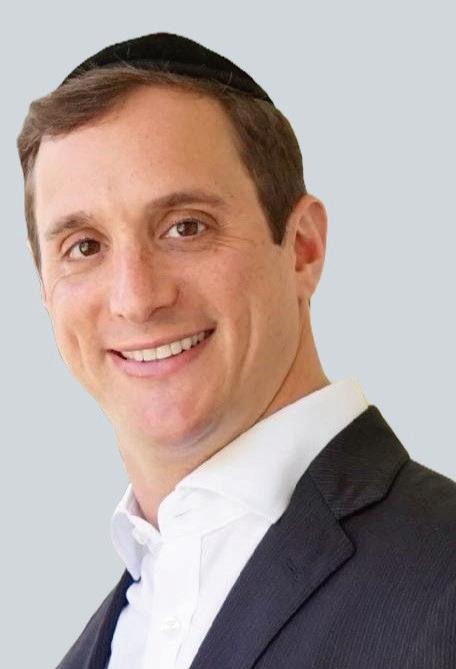
“Since October 7, our brothers have often served on the front lines of campus activism, advocating for Israel and standing up to Jewish hate,” said Rob Derdiger, CEO of Alpha Epsilon Pi International, in a press release. “They continue to do that, but we are equally proud of their commitment to Tikkun Olam, making the world a better place in the face of such negativity and hate.”
Some of the Strength Through Service events included:
Holding a blood drive at Virginia Tech Cleaning up neighborhoods, parks and community spaces at SUNY Oneonta, University of Pittsburgh/Carnegie Mellon University, University of North Carolina-
The Harold Grinspoon Foundation (HGF) announced the launch of the Grinspoon Amber Awards at November’s Jewish Federations of North America (JFNA) 2024 General Assembly gathering in Washington, DC. These annual awards will honor five professionals in the Jewish communal field, celebrating their impact, leadership and commitment to a vibrant Jewish future.
The Grinspoon Amber Awards were conceived of by Harold Grinspoon, the foundation’s founder and a passionate advocate for Jewish communal life.
“The Jewish world benefits tremendously from the most amazing, creative people who work to enhance Judaism around the world,” said Grinspoon in a press release. He added: “This is a small way to show our appreciation, my appreciation and the foundation’s appreciation.”
Since founding HGF in 1991, Grinspoon has championed initiatives that enrich Jewish life and learning, with a firm belief that strong Jewish communities are essential to a vibrant future. PJ Library of Greater Phoenix is one such example.
The Grinspoon Amber Awards reflect his vision by honoring professionals who have made contributions to the Jewish communal field. Whether through achievements, dedication to Jewish values, bridge-building across diverse groups, or overcoming challenges, the awards will celebrate professionals for their impact on the Jewish community.
“Outstanding professionals in our community dedicate themselves to the hard work of nurturing Jewish life, often behind the scenes, and they do it with passion, resilience, and a deep commitment to others,” said Winnie Sandler Grinspoon, president of the Harold
Grinspoon Foundation, in a press release.
“When we considered who could be the right partner for this project, JFNA was the obvious choice. They are deeply committed to supporting Jewish professionals in countless ways, and we are thrilled to partner with them on this one.”
The first winners will be announced a year from now at the Jewish Federations of North America General Assembly in 2025. In addition to a $10,000 prize, each winner will have the chance to “pay it forward” by selecting two other professionals to receive Peer Recognition Grants of $2,500 each. This reflects Harold Grinspoon’s belief that true leadership is about lifting others, fostering a cycle of growth, inspiration, and excellence within the Jewish community.
“Partnering with the Harold Grinspoon Foundation on this initiative perfectly aligns

Charlotte, and the University at Buffalo. Cleaning up neighborhoods damaged by the hurricane at the University of South Florida A joint “Challah Bake” conducted by the University of Arizona and Arizona State University to raise money for Israeli causes.
“Nothing demonstrates AEPi’s mission — to develop future leaders of the Jewish community — better than seeing our undergraduates wholeheartedly take on this initiative at this specific point of time. Our community needs more leaders and our world needs people willing to step up and make a difference, making it better. AEPi’s student members are doing that today and will continue to do so into the future,” said Derdiger. JN
with our mission to support and uplift the dedicated professionals who sustain and enrich Jewish life,” said Eric Fingerhut, President and CEO of the Jewish Federations of North America.
Nominations for the 2025 Grinspoon Amber Awards are now open and will be accepted until Jan. 31, 2025. Eligible nominees will receive an invitation to apply for the award. Nominees interested in being considered for the award will be required to complete an application and submit all necessary documents, including two personal letters of recommendation and a personal statement, by March 20, 2025. JN
For more information about the Grinspoon Amber Awards, visit amberawards.org
STEWART FLORSHEIM | JTA
M
y mother was a Holocaust survivor and my father left Germany in the mid-1930s, when Hitler was coming into power. I grew up in Washington Heights — a Manhattan neighborhood that became known as “Frankfurt on the Hudson” for its large German-Jewish population.
Most of my friends were children of survivors or children of refugees from Hitler’s Europe. Most of our parents did not talk very much about the Holocaust, but we grew up in the shadows of the trauma: the ghosts of family members who did not survive, the ongoing fears of persecution, the pressures to succeed, a contempt for all things German.
Even though I grew up speaking German, I was taught to identify the dialect spoken by non-Jews. When we heard it on our very occasional visits to the Yorktown section of Manhattan, we would discreetly cross the street. My parents also boycotted German products.
When I was first invited in 2023 to participate in the Frankfurt Visit Program — a week-long event for children of survivors whose parents lived in Frankfurt before and during the Holocaust — I wasn’t sure I wanted to attend. The
program, organized and sponsored by the city, is designed to show what Jewish life was like in Frankfurt and what it’s like now, with a vibrant Jewish culture and several active synagogues.
Having grown up with antipathy to all things German, I did not want to support any programs that would even begin to relieve the Germans of their accountability.
But I had started on a journey — reading more and more about the progress of German accountability for the Holocaust, and speaking to individual Germans about their roles in remembrance and reconciliation.
My grandfather had a very successful kosher meat market in Frankfurt. On Kristallnacht, in 1938, everything changed. During that two-day Nazi pogrom, the butcher shop was vandalized and shut down. The Gestapo stormed my family’s apartment above the shop and deported my grandfather to Dachau. When he left, he told my grandmother not to worry, and not to go to the Gestapo to try to get him released. After all, he said, he defended Germany in World War I. Whatever is going on now, he insisted, will blow over.
My grandmother had sisters living in
New York City and, as a result, was able to get a visa for the family to move to America. Contrary to my grandfather’s wishes, she apparently went to the Gestapo every day to try to get him released.
My mother used to tell this story: “Six weeks after my father was taken, I woke up at 2 a.m. because I had a premonition that he was coming home. I ran down to the train station and there he was, on his way home, crying. He cried for weeks. He was never the same.”
The reunited family left everything behind and set sail for New York City in March 1939 to rebuild their lives.
I was surprised when my parents decided to participate in a program called “Wiedergutmachung” (literally, “to make good again”) over 20 years ago, when the local German government invited survivors and refugees back to their hometowns to express their remorse. My father often spoke about his idyllic village and he had a sudden interest in seeing it again. When he went back, he was treated like a VIP. It turned out to be a beautiful closure to his life, because he passed away a few months after he returned.
I started to have a change of heart when
a few of my friends told me about their positive experiences with the Stolpersteine program: Starting in 1992, small brass plaques, or “stumbling blocks,” were placed in front of the places where the Nazis’ victims had lived, worked and studied. I decided to participate in the program with that simple aspiration in mind. I traveled to Frankfurt in 2022 for the installation of four Stolpersteine in front of my mom’s original residence — one each for my grandfather, grandmother, mother and uncle.
The next step in my journey was a bit more complicated: becoming a German citizen.
I never thought I would want to live in Germany, but, motivated in part by the current political situation in the U.S., I was attracted by the idea of having access to the EU. Now, after a few recent trips to the country, I began to fantasize about what it might be like to live in international centers like Berlin or Frankfurt. I applied in March 2022 and received my naturalization certificate in October of the same year. Having become a German citizen, and learning about how Germans were
AUSTIN REID | JTA
Growing up in Lancaster, Ohio, I remember discovering a book in the local library that ultimately helped to change how I viewed my hometown’s history. The book, “Jewish Literacy” by Joseph Telushkin, had a small sticker on the inside cover indicating it was purchased through the B’nai Israel Synagogue of Lancaster Jewish Book Fund. This was surprising, as there hadn’t been an organized Jewish community in Lancaster for years.
I later learned that the fund had been established by the remaining members of the synagogue after its sale in 1993, with the intention of ensuring that the tradition of Jewish education continued in Lancaster, even in the absence of a physical synagogue. This discovery, along with other signs like a Star of David engraved next to a cross on
the town’s war memorial and the presence of the building that once housed the B’nai Israel synagogue, hinted at Lancaster’s former Jewish community. During its nearly seven decades of existence, B’nai Israel not only served its congregants but also hosted groups — including church youth organizations and civic societies — to educate others about Judaism.
For the last several years, I’ve dedicated myself to documenting the Jewish histories of small towns in both my home state of Ohio and my adopted state of New York. I am drawn in by the realization that many of these once-active communities, despite their contributions, were in danger of fading into obscurity. I have spent countless hours piecing together the stories of Jewish families, tracing their lives and legacies
in over 20 small towns. In most of these places, the written record of their Jewish past was sparse, with local historical organizations often lacking the resources or staffing to fully explore these stories.
Small-town synagogues often function not just as religious institutions but as unique centers for education and community engagement. In Lancaster, the B’nai Israel synagogue opened its doors to various groups seeking to learn about Judaism.
Eighty miles to the south, in Portsmouth, Ohio, the Jewish community was also engaged in interfaith efforts from its earliest days. When Beneh Abraham, the local synagogue, was consecrated in 1858, Christian residents of the town supported the construction, and the First Presbyterian Church choir sang during the dedication.
The local rabbi, Judah Wechsler, taught in both English and German. Wechsler’s leadership helped Beneh Abraham function as more than a religious space — it became a center for community engagement in Portsmouth. Portsmouth’s first synagogue, like many other historic religious structures in America, no longer stands today, but Beneh Abraham continues to exist in Portsmouth and is one of Ohio’s oldest Jewish congregations.
In Auburn, New York, the former B’nai Israel Synagogue played a crucial role in bringing neighbors together and fostering understanding. Throughout much of the 20th and early 21st centuries, B’nai Israel welcomed interfaith activities, particularly through its long-standing relationship with

RABBI JEREMY SCHNEIDER
PARSHAH CHAYEI SARAH:
GENESIS 23:1 - 25:18
Alden Whitman is known as the godfather of obituary writers. His style, sensitivity, attention to detail and work ethic set the standard by which all obituary writers are judged and measured. The story is told about the time he met with the largerthan-life Bette Davis. He was writing a newspaper article about her coming made-for-television movie — at least that was his pretext. It was the truth, but not the whole truth. He asked questions and she answered; she talked, he listened. Hours rolled by, teatime arrived and she finally said, “May I ask you a question? You’ve spent an awful lot of time asking me questions that you couldn’t possibly be using in this article.”
He offered lamely, “I like to be thorough.”
But Davis persisted. “By any chance, are you interviewing me for my obituary?” he remembers her asking.
Cornered, he confessed, “Yes, as a matter of fact I am.” Whereupon she disappeared
GERMANY
CONTINUED FROM PAGE 11
teaching about the Holocaust, supporting refugees and fighting ring-wing ideology, I couldn’t see a reason not to participate in the Frankfurt Visit Program this past September.
During the week of the program, we met with local students to tell them about our experiences as the children of survivors, a program organized by Project Jewish Life. I asked them when and what they learned about the Holocaust, and if they felt any remorse. Most of them agreed they were too far removed, but they wanted to learn about it, partly to make sure it doesn’t happen again. By way of comparison, one of the teachers, a woman in her 40s, said her grandparents never spoke about the Holocaust, and she was too ashamed to acknowledge that she was German when she traveled around Europe in her teens.
The conversations moved to current times; for example, the students wanted to know about antisemitism in the U.S. given the crisis in the Middle East. I told them how impressed I was that Germany has been accepting accountability for the Holocaust, as witnessed by so many actions, including the acceptance of refugees fleeing persecution, climate change and other disasters.
Since I write poetry, I also met with
into the kitchen and returned with a shaker of martinis.
He remembers her saying, “In that case, why don’t we get rid of this silly tea and have a drink?”
Whitman probably thought about death more than any man in America. It was his sacred and not always pleasant task to prewrite obituaries for the greatest men and women of our age. His files were legendary, as was his tact and tenacity for delicately interviewing his subjects while they were still in a position to talk about their lives.
A phone call or a visit from Whitman signaled two things to the subject. One, that you had made it, you had arrived at some social status or station, and two, that you might be departing rather soon. When asked about the peculiarity of prewriting obituaries for the notable and noteworthy, Whitman replied, “Death, the cliché assures us, is the great leveler; but it obviously levels some a great deal more than others.”
When one looks at the timeline of a person on their tombstone, what is most significant on that marker is not the date of birth nor the date of death, but the dash, the hyphen between them.
That dash is the lifeline; it is along that dash that people lived and experienced life.
It is interesting to note that no matter the span in years between one date and the other, the length of that dash is always the same. I think this is to show that there is fullness and meaning in every person’s life. No matter its span, we can find in every dash the moment or moments that defined and shaped that person. And that is what an obituary is supposed to be: a picture, a snapshot. It’s not a full-length biography, it’s not a portrait; rather, it’s a quick picture. It is the point or points along that dash that define a person, that tell the story of their soul.
In the immediate years after 9/11, The New York Times began printing obituaries for those killed in the attacks on the World Trade Center. Perhaps you read some of them. Every day the paper filled a full page with 10 to 15, 150-word snapshots of the lives lost on that harrowing morning. They set for themselves the goal of capturing the lives of every victim of the World Trade Center attacks, even with a self-imposed 150-word limit for each. It took them almost a full year to pay tribute to all those who were lost.
Whitman and Wendall Jameson took on the role of editors for the project. Jameson reported that the goal for him and his four fellow writers was to capture how the victims lived, not how they died. He
SMALL TOWN
CONTINUED FROM PAGE 11
a group of students at the University of Frankfurt who are studying poetry. They wanted me to read poems about my experiences growing up as a child of a survivor. The class included native Germans as well as refugees, and they asked me questions about my writing process, and whether or not it helps me come to terms with the past.
I told them it does, as represented by the last few stanzas of one of the poems I read called “Mother’s Favorite Drawing.”
The poem is based on a drawing by Käthe Kollwitz called “Mother and Child:”
My mother used to say the Holocaust affected me more than it affected her — partly because I never stopped asking questions and reading about it. I felt like I was living in two worlds: a world inhabited by the ghosts, and our comfortable middle-class American life. I was always trying to reconcile the two worlds, which later extended into an activism against contemporary genocide.
On my journey from Washington Heights to Frankfurt, I discovered that reconciliation is well under way. JN
The views and opinions expressed in this article are those of the author and do not necessarily reflect the views of JTA or its parent company, 70 Faces Media.
St. Luke’s United Church of Christ. This engagement included an annual exchange of pulpits, novel when it began in 1939, where the rabbi of B’nai Israel and the minister at St. Luke’s would preach at each other’s congregations.
In both Auburn, New York, and Lancaster, Ohio, the B’nai Israel synagogues’ efforts to educate non-Jewish neighbors about Judaism often left lasting impressions, in keeping with studies showing that the more people know about Jews, the less they embrace antisemitic tropes.
As small-town Jewish communities across America continue to contract, preserving their histories becomes not just an act of remembrance, but also an essential part of understanding the broader American story.
As the physical reminders of small-town Jewish life fade, there is a danger that their stories will disappear, a loss not only for Jewish history but American history.
In Lancaster and Auburn, the efforts of individuals and institutions to preserve local Jewish histories stand as models of how this work can be done. In its last years, members of Auburn’s former B’nai Israel synagogue donated many of the congregation’s religious artifacts, including the synagogue’s historic stained-glass windows, to
SHABBAT ENDS
explains that even in 150 words, they were still committed to the principles of their craft, to have a compelling beginning and a last sentence about the deceased that “stays with you” even after you turn the page. I would have thought that with 5,000 deaths the greatest challenge would be connecting them all, finding commonality between them. But what I found so interesting in Jameson’s description of his work was that the greatest challenge was just the opposite: With just 150 words, how do you celebrate the differences and unique qualities of an individual?
In this week’s Torah portion, Chayei Sarah (The Life of Sarah), we read about her death and the efforts that her husband, Abraham, took to create a loving funeral and resting place for her. This story, the life and death of our matriarch, Sarah, is a reminder to realize the pres ence and blessings of our loved ones. Be a significant dash on their hyphen and let them be a significant dash on yours. JN
the Cayuga Museum of History & Art, ensuring that the congregation’s memory would live on in a public space.
But in most of the communities I’ve studied, there was no such effort until recently. In some towns, synagogues were demolished or fell into disrepair, their histories largely unrecorded. It wasn’t until I began this work as an undergraduate that the stories of these Jewish communities began to be gathered and pieced together, bringing their legacies back into the light. Preservation alone is not enough. These histories must be shared and integrated into broader conversations about American identity. We not only honor Jewish families who helped to build and sustain so many small-town communities but also ensure that future generations understand the complexity and richness of small-town life . In a time when debates about national identity dominate our public discourse, preserving the histories of small-town Jewish communities offers a crucial reminder: that the American story is, and always has been, one of diversity and change. JN
The views and opinions expressed in this article are those of the author and do not necessarily reflect the views of JTA or its parent company, 70 Faces Media.


MALA BLOMQUIST | MANAGING EDITOR
Charitable parents have charitable kids.
A study released in 2023 by Fidelity Charitable, an independent public charity and the nation’s largest grantmaker, shows that children are following in their parents’ charitable footsteps, with 81% of parents who give reporting that their children under age 18 also participated in a charitable activity in the past year.
Youth philanthropy has evolved significantly over recent years, with several notable changes that reflect shifting values, digital advancements and new priorities among younger generations.
“Teens can be incredibly thoughtful, sophisticated givers. Engaging them in philanthropy as a process rather than just a simple act of dropping coins in a box means we are truly getting them ready to care for our community moving forward,” said Andrea Cohen, director, youth philanthropy and community engagement for the Center for Jewish Philanthropy of Greater Phoenix (CJP).
High school student Lily Messing noticed that the social ills plaguing her native Tucson — including domestic






















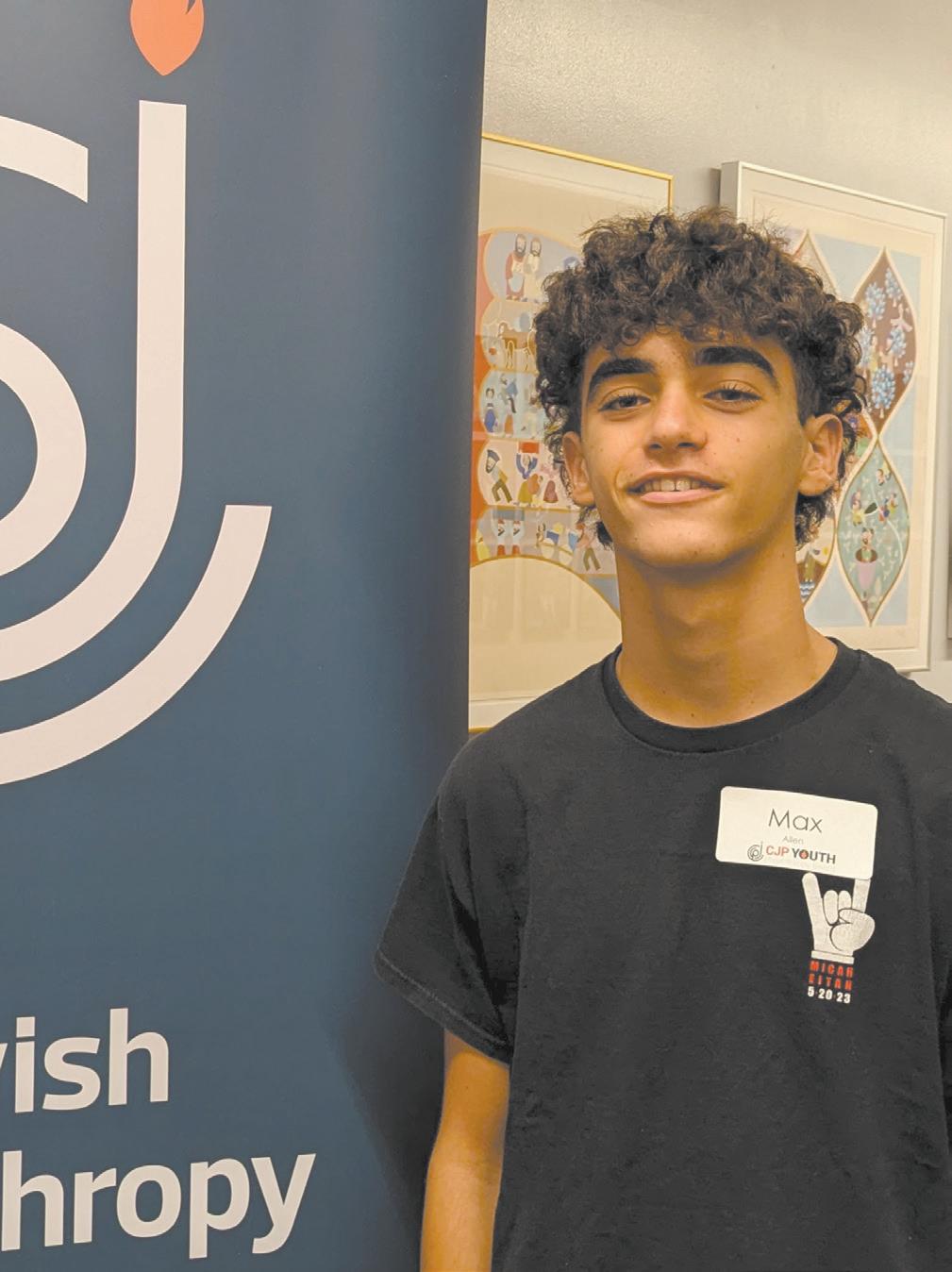
violence, drug abuse and homelessness — all seemed to be getting worse as the COVID pandemic raged.
In 2021, as a sophomore at The Gregory School in Tucson, Messing established 100+ Teens Who Care, a nonprofit network of “giving circles” based on the premise that donating $25 to a nonprofit alone might feel insignificant, but when combined with donations from over 100 like-minded teens, substantial change is possible. Her first chapter, in Tucson, started out with 100 members and now boasts more than 200 teens. Her impact has expanded across the United States and internationally, with 23 chapters now operating in places ranging from Idaho to Islamabad, Pakistan.
Many young donors prefer collaborative approaches to philanthropy, often working with community organizations or peerled groups rather than contributing to large, well-known nonprofits.
This trend highlights a preference for collective impact, where youth seek to make meaningful change as part of a



































larger movement.
“I began the organization because I felt like teens really wanted to make a difference but lacked the coordination and opportunity to do so,” Messing said in a 2023 interview with Jewish Telegraphic Agency. “I wanted to give them an outlet to make meaningful change in our community.”
Avah Montgomery, a senior at Shadow Mountain High School in Phoenix and member of CJP’s Youth Philanthropy Board, agreed that charitable giving “makes me feel like I can have an impact on the world, like I can make a difference.”
Fellow Youth Philanthropy board members Max Allen, a freshman at Phoenix Country Day School in Paradise Valley, and Aleyna Lange, a junior at Chaparral High School in Scottsdale, also agreed that philanthropy allowed them to make an impact.
“I love giving back, and it is important to help your community,” said Allen.
“It gives me an opportunity to make a difference,” said Lange.
Today’s youth are deeply aware of social justice issues and often focus their philanthropic efforts on equity, inclusion and systemic change. They prioritize causes
like racial justice, LGBTQ+ rights, gender equality, environmentally conscious giving and supporting initiatives that aim to improve both human and environmental health over more traditional areas of giving.
Influencers and peer-led campaigns also play a significant role, with young people leveraging these tools to engage their networks and inspire others. Social media and crowdfunding platforms have made engaging in philanthropy easier for young people. Platforms like GoFundMe, Instagram and TikTok allow youth to raise funds, spread awareness and mobilize communities around causes.
“Digital access also lets young people stay informed about global issues, making them more likely to contribute to causes beyond their own communities,” said Cohen. “Empowering teens to look at addressing the root causes of problems rather than band-aid symptoms provides them with a truly strategic lens with which to approach meeting needs. Philanthropy allows teens to be part of the solution.”
“I love getting to work as a community to make informed decisions about philanthropy, but I also love learning about different organizations from across the world that are doing good things for people around them,” said Montgomery.
Since teens don’t have the bank accounts to contribute as much monetarily as
their parents, they are more inclined to volunteer their time.
Volunteering is a “great opportunity to help out in my community,” said Allen.
Through youth philanthropy programs, like the B’nai Tzedek Youth Philanthropy Program, Allen, Montgomery and Lange participate in decision-making and have a say in how their funds are allocated.
“I want to make philanthropic decisions about my money, and research different organizations that recognize/work towards goals that are important to me,” said Montgomery.
Lange added that the program “allows
me to mindfully donate to causes I care about.”
These programs foster a sense of ownership and empowerment, building leadership skills and a lasting commitment to philanthropy, so the kids of charitable parents can keep the tradition going. JN
For more information on the B’nai Tzedek Youth Philanthropy Program, visit phoenixcjp.org/what-we-do/ bnai-tzedek-youth-philanthropy-program.
Jewish News is published by the Jewish Community Foundation of Greater Phoenix, a component of the Center for Jewish Philanthropy of Greater Phoenix.



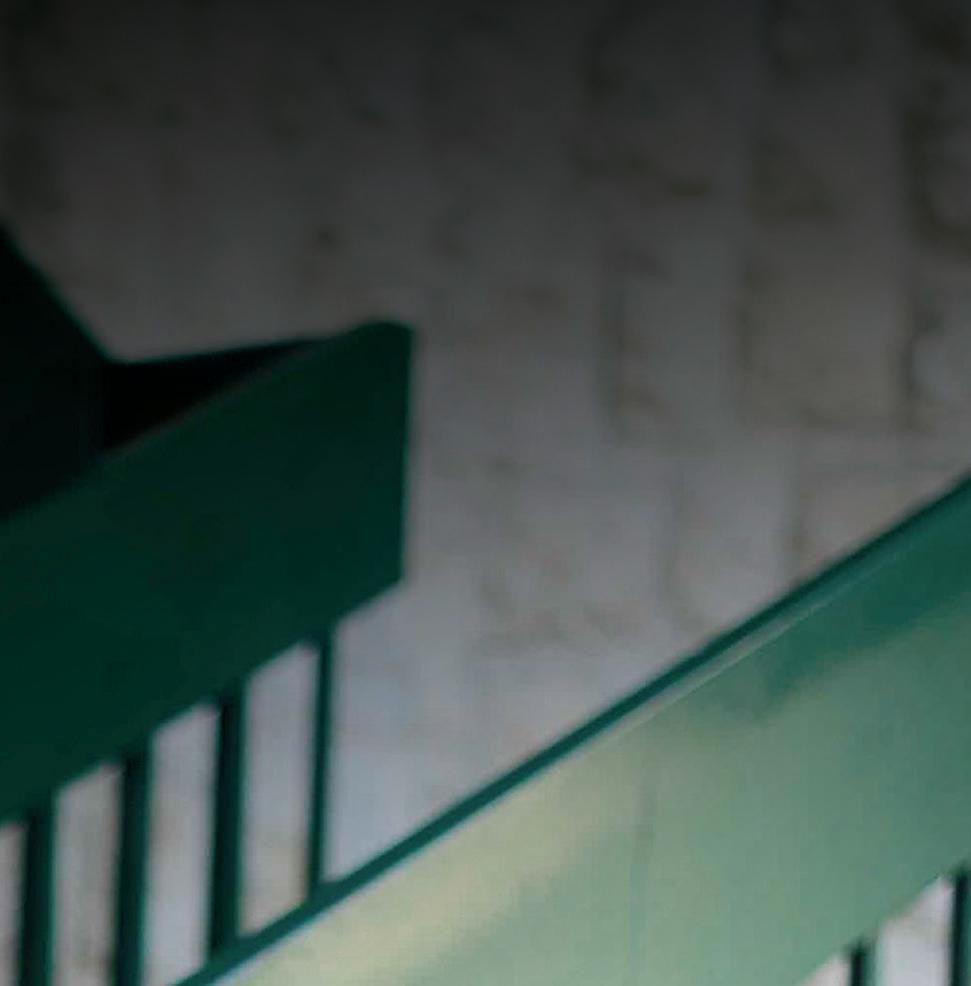
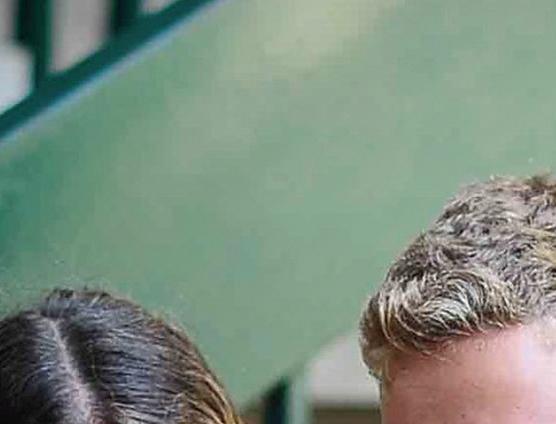



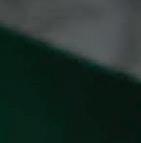



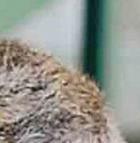

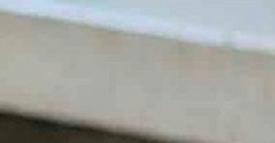

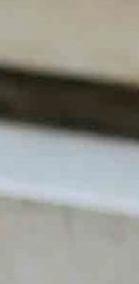
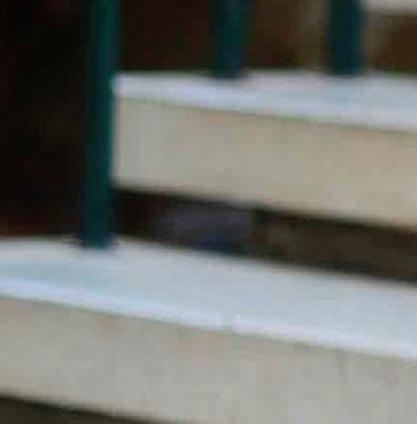
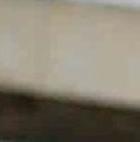












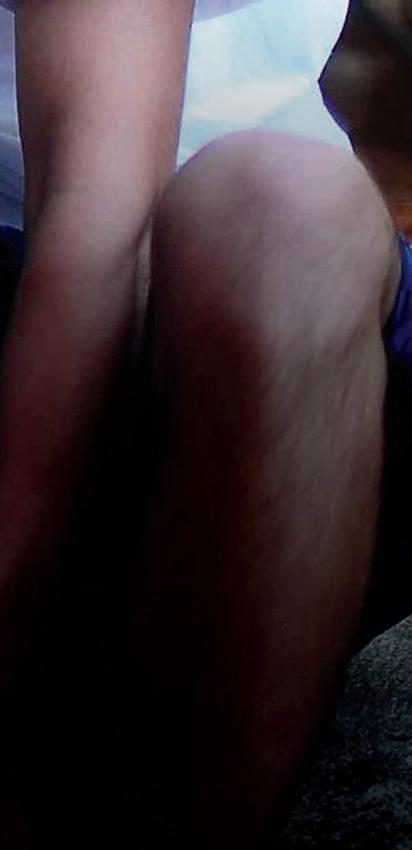

ALLISON L. KIERMAN | SPECIAL TO THE JEWISH NEWS

IAllison L. Kierman COURTESY OF ALLISON L. KIERMAN
f you had $1,000,000 to give away to one charity, what charity would you choose? Do you want to support a large organization which already has a multi-million dollar giving program that you know works? Or, do you prefer to support a smaller organization where your money would make a radical difference in the organization? Regardless of your answers to these questions, now more than ever, I am seeing charitable giving as “Purposeful Giving” and “Thankful Giving.” The great news is, you don’t need $1,000,000 to be purposeful or thankful.
Purposeful giving is charitable giving for a specific purpose. Instead of just giving to an organization or an endowment, people are giving for specific causes or to programs that were meaningful in their

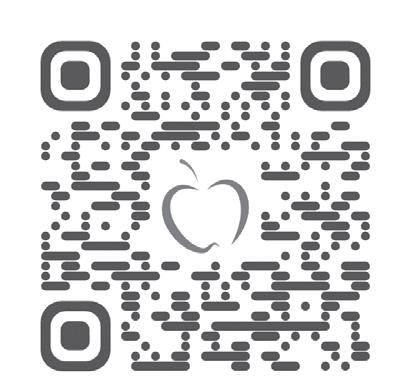

lives. Among these are the following examples:
• Student scholarships: Giving to support students who want to go to the school or seek admission to the same professional program as the donor.
• Finding a cure: Giving to support research in a medical field or for a specific illness that the donor or a close family member has been diagnosed with.
• Volunteer focus: Donors are giving to organizations and/or causes to which they have volunteered their time.
• Jewish organizations: Giving to the Center for Jewish Philanthropy of Greater Phoenix but directing those funds for other Jewish nonprofits within the community, such as the donor’s synagogue.
• Family causes: Families are finding charitable causes that multiple generations can rally around – popular ones include women’s rights, the environment and poverty. If there is a cause your family can rally around, the

generosity of charitable giving can help educate younger generations about the importance of charitable giving and being involved in a cause and/or community endeavor.
• Legacy: Beyond leaving an inheritance for immediate family members, charitable giving can also be about leaving a legacy for your family name or to expand the impact of a donation beyond the limits of annual giving. These are just a few examples of purposeful giving I have seen over the last year.
Thankful giving has been a way for donors to say “thank you” to individuals or organizations through financial contributions. Some examples:
• Doctors: I have seen a number of donors giving greatly to doctors or medical institutions who donors believe are responsible for “saving” the donor’s life.
• Teachers/rabbis: Donors are giving to support chair positions or lifelong rabbinical positions as a way to say thank you to a teacher or rabbi that has made a meaningful difference in the donor’s life.
• Synagogues: I also see donations to synagogues who have included their families or children specifically in services or programs. For me personally, my son played the guitar and blew the shofar at our High Holiday Services. A portion of my family’s giving is specifically a “thank you” to our rabbis for including my son and helping him grow in his song leadership.
Purposeful and thankful giving are, in large part, about relationships –relationships with organizations, causes and people. The donation will reflect the good donors hope their resources will do in the lives and organizations of the community. These are some of the ideas and trends I’m seeing in charitable giving as we near the end of the year. As always, it is important to consult with a tax professional when taking tax deductions for your charitable giving and with an estate planning attorney to memorialize your charitable giving at the time of your death. JN
Jewish News is published by the Jewish Community Foundation of Greater Phoenix, a component of the Center for Jewish Philanthropy of Greater Phoenix.
L. Kierman is the managing partner of
Law,
an estate planning law firm
in Scottsdale. She also serves as secretary of the board of directors of Congregation Beth Israel.
SHANNON LEVITT | STAFF WRITER
Thanksgiving is a time for family, food and gratitude, but this year, you may find yourself gathering around the table with loved ones who hold sharply different political views following a polarizing presidential election. While this season is traditionally about connection, many families may find themselves walking on eggshells or avoiding certain topics altogether. So, what should you talk about to keep the conversation light, inclusive and respectful?
Here are some strategies and ideas for navigating Thanksgiving discussions after a charged election season:
Set the tone early
If you’re hosting or organizing the gathering, it can help to set the tone early. Consider opening the conversation with a warm, inclusive statement that emphasizes gratitude for each other’s presence, regardless of political differences. Acknowledge the challenging times we’re living in, but also remind everyone that the holiday is a chance to come together over shared values — family, tradition and support.
Steer away from politics (if needed)
If you sense that tensions are high, it may be best to steer away from politics altogether. While it might feel tempting to discuss the election results, doing so could quickly spark arguments that overshadow the spirit of the day. Instead, focus on non-political topics that everyone can engage in:
Favorite holiday traditions: Ask everyone what Thanksgiving traditions they cherish the most.
Family memories: Share funny or touching stories from past holidays.
Food: Everyone has something to say about what’s on the table. You can talk about favorite dishes, cooking tips, or creative new recipes.
Travel plans: Talk about upcoming family vacations or dream destinations. Hobbies: Ask about hobbies people are passionate about or new activities they’ve picked up.
By shifting the focus, you invite a lighter, less divisive conversation that can help everyone relax and enjoy the moment.
Ask thoughtful, open-ended questions
If you do want to discuss topics with more depth, ask questions that encourage reflection and personal sharing, rather than debate. Open-ended questions help create an environment where people feel
heard without necessarily feeling the need to “win” an argument. Some examples include:
“What’s something you’re grateful for this year?”
“What’s a challenge you’ve overcome recently?”
“What’s a new skill or interest you’ve developed over the past year?”
“What’s a book, movie or show that’s really resonated with you lately?”
These questions help build connections through personal stories, and they’re often a better way to engage with family members than diving into politically charged debates.
Embrace empathy and active listening
If political discussions inevitably come up, try to be an active listener. Rather than simply preparing your response, take time to truly understand the other person’s perspective. Acknowledge their feelings without necessarily agreeing with them. For example, you can say:
“I hear that you’re frustrated about the outcome, and I understand why that’s tough for you.”
“It sounds like you’re really passionate about this issue. I may not agree, but I respect your point of view.”
This approach helps to create a more respectful dialogue where people feel heard, even if you disagree.
Find common ground
In a divided political climate, it can feel like there’s nothing you share with those on the other side. However, most people care about similar things: family well-being, safety, health and future generations. Bring up topics that center on these universal concerns. Consider conversations about:
Community issues: What’s happening in your local area? Are there ways to get involved in improving your neighborhood or supporting local businesses?
Health and wellness: Conversations about staying healthy, both mentally and physically, can bring a sense of solidarity and focus on well-being.
Environment: Discussing conservation and how to care for the planet can unite people.
By shifting the focus to areas of common interest, you may find that political differences seem less important.

Be ready to agree to disagree
In any family, there will be disagreements, and that’s okay. Thanksgiving doesn’t need to be a day where everyone must think the same way, but it’s important to respect boundaries. If a discussion turns contentious, it may be worth gently steering the conversation elsewhere or even agreeing to disagree.
A simple phrase like:
“I respect that we have different views, but I think it’s important that we don’t let it affect our time together today.”
This reminder can help maintain peace and ensure that no one feels attacked or judged for their opinions.
Share the things you’re thankful for Remember the true spirit of Thanksgiving: gratitude. Everyone around the table has something to be thankful for, even in difficult times.

If politics are too divisive, encourage everyone to share something positive or a moment from the past year that brought them joy. Whether it’s a personal achievement, a family milestone or simply the fact that you’re all together, these moments can help foster connection and remind you of the things that matter most.
Thanksgiving is about coming together, and despite the polarization of the political landscape, you can still have meaningful, enjoyable conversations. By staying focused on what unites you rather than what divides you, you’ll create a holiday atmosphere where respect, understanding and love take center stage. Enjoy the time with your family, and remember that sometimes the best conversations are the ones that don’t need to be about politics at all. JN










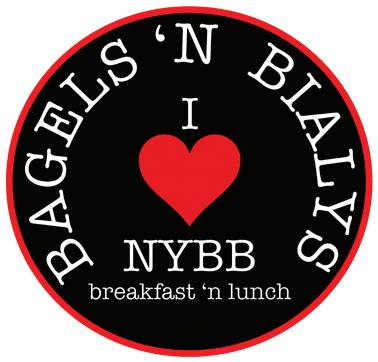
Makes: 6 servings
Prep Time: 10 minutes
Bake Time: 50 minutes
Total Time: 1 hour (start recipe day ahead so that bread will dry out)
Ingredients
• 1 pound butternut squash, cubed
• 1 pound brussels sprouts, halved
• 1 medium gala apple, cut into a 1/2 inch dice
• 2 shallots, thinly sliced
• 3 tablespoons olive oil, divided into 2 tablespoons and 1 tablespoon
• 1 cup onion, diced
• 1 cup celery, diced
• 10 slices bread of choice: crusty sourdough, dry cornbread, whole grain, or, if you are gluten free, millet bread from Food For
Life will work nicely. Prior to preparing the recipe, leave bread out for a day to become slightly dry, then cut into cubes.
• 1 & 1/2 cups vegetable broth (plus extra as needed)
• 2 teaspoons fresh rosemary, chopped
• 1 teaspoon fresh thyme
• 1 teaspoon chopped fresh sage
• 1/3 cup dried cranberries
• 1/3 cup pecans or walnuts
• Sea salt and pepper to taste
Stuffing goes with turkey like, well, pumpkin and pie. You gotta have it! Try this Butternut Squash and Brussels Sprouts Stuffing and you will agree with how well it will pair with your turkey. And, if you are hosting a vegan or vegetarian Thanksgiving (yes, there is such a thing!), this is a heavenly touch of the holiday! Non-vegans won’t even realize there is no chicken stock in this delightful stuffing!
The key to the rich flavor is roasting the vegetables before combining with the remaining ingredients. They get caramelized and delicious! Meanwhile, sauté the onions and celery and then add the bread cubes.
Makes: 6 breadsticks
Prep Time: 20 minutes
Bake Time: 25 minutes
Total Time: 45 minutes plus rise time 90 minutes
Ingredients
For the Bread:
• 1 & 1/2 cups pumpkin purée
• 2 teaspoons instant yeast (or active yeast, but see Chef’s Note below)
• 2 tablespoons honey
• 1/2 cup lukewarm water
• 2 tablespoons vegetable oil
• 3 & 1/2 cups all-purpose flour, plus more as needed
• 1/2 cup sunflower seeds
• 2 tablespoons sesame seeds
• 1 tablespoon flax seeds
• 2 teaspoons salt
For the Topping:
• 1 egg, lightly beaten
• 1/4 cup pepitas, pumpkin seeds
• 1 tablespoon poppy seeds
• 2 tablespoons sunflower seeds
Thanksgiving breads are such a treat and these Seeded Pumpkin Breadsticks are no exception. Crunchy on the outside, soft and pumpkin-y on the inside, these will become your new favorite for the holiday!
The breadsticks only take 45 minutes plus rise time and are so good. Serve them with a side of whipped honey butter and life doesn’t get much better!
Combine pumpkin purée, yeast, honey, water, vegetable oil and 1 cup of flour in a mixing bowl. Stir in the seeds and salt and use the kneading hook to combine. Add the remaining flour gradually and knead the dough to incorporate. You may have to add extra flour so that the dough isn’t too sticky. I added

Once the bread is browned, add in the roasted veggies, broth, cranberries, pecans and seasonings. Transfer the entire mixture to a baking dish, bake for 20 minutes and you are ready to serve!
Instructions
Heat oven to 400°F. Toss the squash, brussels sprouts, apples and shallots in 2 tablespoons oil and season well with salt and pepper. Roast until vegetables are very tender (I actually like my sprouts a bit singed) and remove from oven, approximately 30 minutes. Reduce oven heat to 350°F.
Heat remaining tablespoon oil in a large pot. Sauté the onion and celery till translucent (about 5-8 min). Add the bread cubes and allow them to get golden brown with the veggies in the oil, approximately 5 minutes. Add a dash of salt and pepper.
Add the roasted vegetables, vegetable broth, cranberries, pecans, and seasonings. Stir the mix till the broth has almost entirely absorbed in the toasted bread. Transfer to an oiled or sprayed baking dish and bake for about 20 minutes. Serve hot.

about 1/3 of a cup more.
Transfer to a greased bowl and let it rise until double the size, about 90 minutes. On a floured surface, divide the dough into six pieces and roll each piece into a log that is 1.5 inches by 12 inches long. Place them on 2 lightly greased baking sheets a few inches apart. Cover with a clean dish towel and let them rise for 30-45 minutes.
Brush the rolls with beaten egg and sprinkle pepitas, poppyseeds and sunflower seeds over and bake until golden and crispy.
Instructions
In a large bowl or the bowl of a stand mixer fitted with the paddle attachment, combine the pumpkin puree, instant yeast, honey, water, vegetable oil and 1 cup of the flour. Mix until combined. Stir in the seeds and salt, then switch to the kneading hook.
Gradually add 2 & 1/2 cups more flour, kneading to incorporate and adding more as needed until you have a smooth and moist dough, that is not sticky or too dry (I used an addition 1/3 cup flour). Remove dough to a greased bowl, cover with plastic wrap and allow to rise until doubled, about 60-90 minutes. Remove dough to a floured surface and gently deflate. Divide dough into 6 equal portions and form into a log 1 & 1/2 inches wide and 12 inches long. Place onto a large, lightly greased baking sheet (I used two baking sheets to give the breadsticks room to spread out). Repeat with remaining dough pieces,
Makes: 20 servings
Prep Time: 20 minutes
Bake Time: 1 hour
Total Time: 1 hour & 20 minutes
Ingredients
For the Cake:
• 1 cup neutral flavored oil (sunflower, safflower, grape seed, avocado, canola and vegetable oils will all work)
• 1 cup apple cider
• 1 cup applesauce, no added sugar
• 2/3 cup granulated sugar
• 1 cup brown sugar, packed
• 3 large eggs
• 2 teaspoons vanilla extract
• 4 teaspoons baking powder
• 2 & 1/2 teaspoons ground cinnamon
• 1/2 teaspoon ground ginger
• 1/2 teaspoon ground nutmeg
• 1/4 teaspoon ground cloves
• 1 teaspoon kosher salt
• 3 cups all-purpose flour
For the Apple Cider Glaze:
• 1/4 cup apple cider
• 2 tablespoons unsalted butter (or kosher non-dairy substitute)
• 2 teaspoons salt
• 3/4 cup powdered sugar
This Apple Cider Bundt Cake is just what you need when you are looking for an easy, apple-forward flavor in a cake.
It’s got triple the apple flavoring from using apple cider and applesauce in lieu of butter in the batter, and a delicious apple cider glaze to top the cake. Also, it’s so darn easy! Everything gets whisked together in one bowl. Gotta love that, right??!!
There is an apple cider glaze that goes on top that gives the bundt cake a crispy crunchiness that is truly divine!
Let’s talk details …
Prepare the bundt pan by spraying it with baking spray; use a small piece of paper towel to rub the spray into all of the crevices. Then lightly spray the pan again.
In a large bowl, combine oil, apple cider, applesauce, both sugars, eggs and vanilla. Once the batter is smooth, add the baking powder and all the spices, whisking until it’s smooth. Finally add the flour and whisk again until the flour is incorporated.
Pour the batter into the prepared Bundt pan and bake it until a toothpick inserted in the middle comes out clean. This will take between 55 and 65 minutes. Let the cake cool for 10 minutes and then invert it onto a cooling rack set over a sheet of aluminum foil (for easy cleanup).
In the meantime, make the glaze by combining the apple cider, butter and salt and microwaving it until the butter is melted. Add the powdered sugar and whisk until it’s smooth.
While the cake is still warm, brush the glaze over the cake. Once it’s completely covered, brush more on until you have used it all up.
Once the cake is completely cooled, the glaze should be dry and a little bit crispy.
I told you this would be easy!
placing sticks a couple of inches apart on the sheet. Cover with a clean tea towel and allow to rise until doubled, about 30-45 minutes.
Preheat oven to 400°F. Brush rolls with lightly beaten egg, then sprinkle with pepitas, poppy seed and sunflower seeds. Bake in preheated oven for about 25 minutes, or until golden and hollow-sounding when tapped. Remove to a cooling rack to cool.
Chef’s Note:
If using active dry yeast, you can’t add it directly to the flour as it must be proofed in warm water. So add the active dry yeast directly to the lukewarm water, let stand 5 minutes, then add that mixture to the dough ingredients when yeast is specified.

Instructions
Preheat your oven to 325˚F. Place a piece of parchment paper or foil on a work surface and set a cooling rack on top of it (for easy cleanup).
For the Cake:
In a large mixing bowl, combine the oil, apple cider, applesauce, sugars, eggs and vanilla. Whisk until well combined and the batter is smooth.
Add the baking powder, all of the spices and the salt. Whisk again until everything is well incorporated.
Add the flour and whisk just until incorporated and the batter is fairly smooth.
Spray a 12-cup Bundt pan (or 2 9×4 or 9×5-inch loaf pans) generously with baking spray. With a small piece of paper towel, rub the baking spray to make sure all the grooves and crevices are coated. Spray the pan again lightly.
Pour the batter into the prepared pan and bake for 55-65 minutes or until a toothpick inserted into the center of the cake comes out clean or with just a few moist crumbs on it OR (even better) an instant thermometer inserted into the center of the cake reads 200-205˚F.
Allow the cake to cool in the pan for 10 minutes and then invert onto the prepared cooling rack.
For the Apple Cider Glaze:
While the cake is cooling for 10 minutes in the pan, prepare the glaze: In a small microwave-safe bowl or measuring cup, combine the apple cider, butter and salt. Cover with a slightly damp paper towel and microwave on high power for 45-60 seconds or until the butter is melted.
Remove from the microwave and add the powdered sugar. Whisk until nice and smooth
Slowly brush the glaze all over the cake, including the center core. Keep brushing, using all the glaze. Some of it will drip off onto the parchment or foil but most of it should sink into the cake. Allow the cake to cool and the glaze to dry. Serve and enjoy! JN
Francine Coles is a food blogger based in Phoenix. Find more of her food insights and recipes at thefancypantskitchen.com.


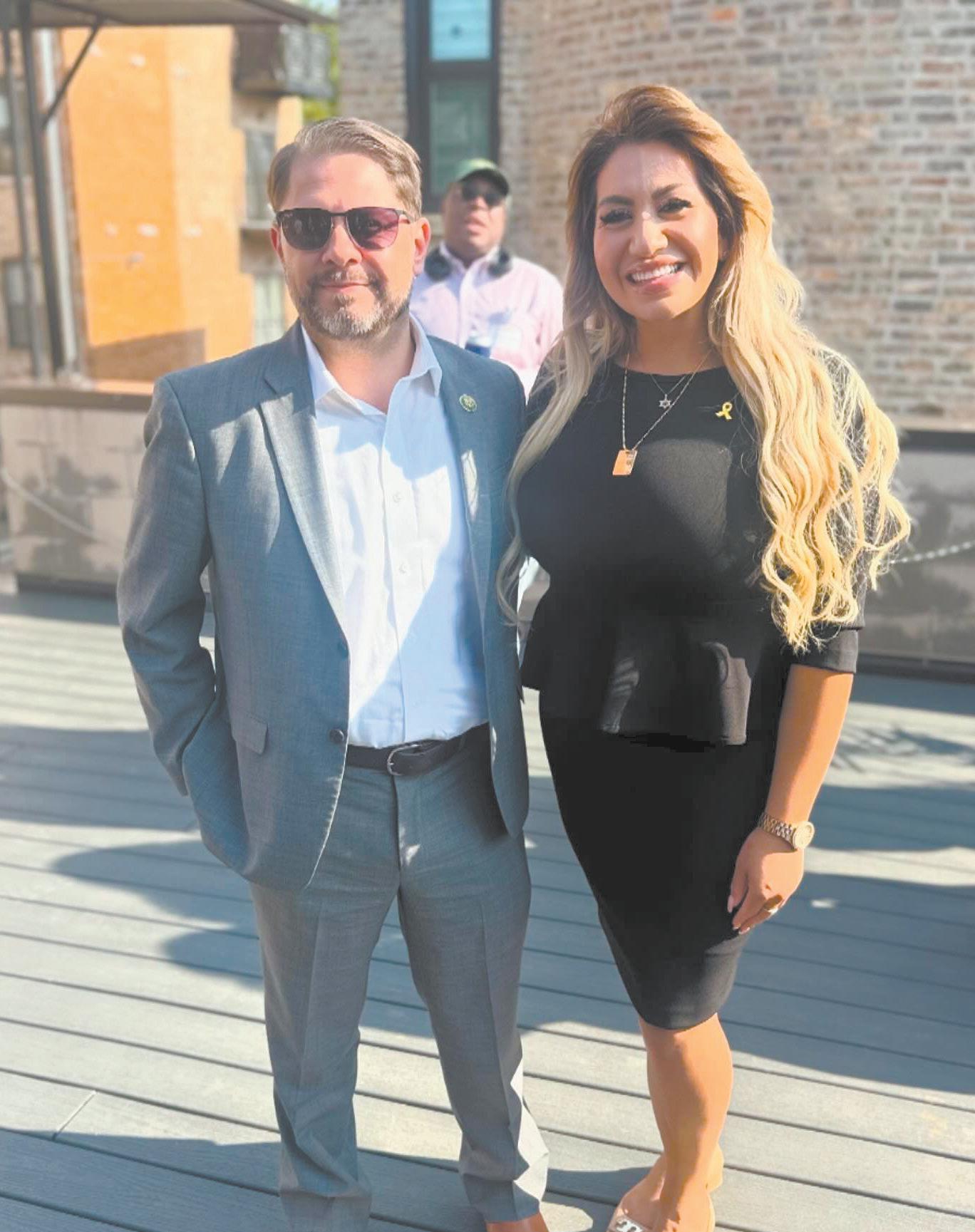
Denise Israel, left, and Rabbi Alicia Magal of the Jewish Community of Sedona and the Verde Valley sing "Lu Yehi," a Hebrew song that speaks of hope for peace during a commemoration service, Remembering Oct. 7, 2023, to honor those murdered in the Hamas attack on Israel last year.

NowGen, a program of the Center for Jewish Philanthropy of Greater Phoenix that connects Jewish adults in their 20’s through 40’s in community, philanthropy and leadership, hosted another successful happy hour on Tuesday, Sept. 24, at RnR Gastropub in Scottsdale.
COURTESY OF NOWGEN
Gloria Bold, left, and Rabbi Dana Evan Kaplan at Temple Beth Shalom of the West Valley’s Western BBQ and Hoedown fundraiser on Sunday, Oct. 20.
Shoshana Beran, left, and Nicole Pendergast became great friends participating in the Bureau of Jewish Education of Greater Phoenix’s (BJE) single parents’ zoom every month. Here they are together at the BJE’s Rosh Hashanah event for single parents.
OF
OF
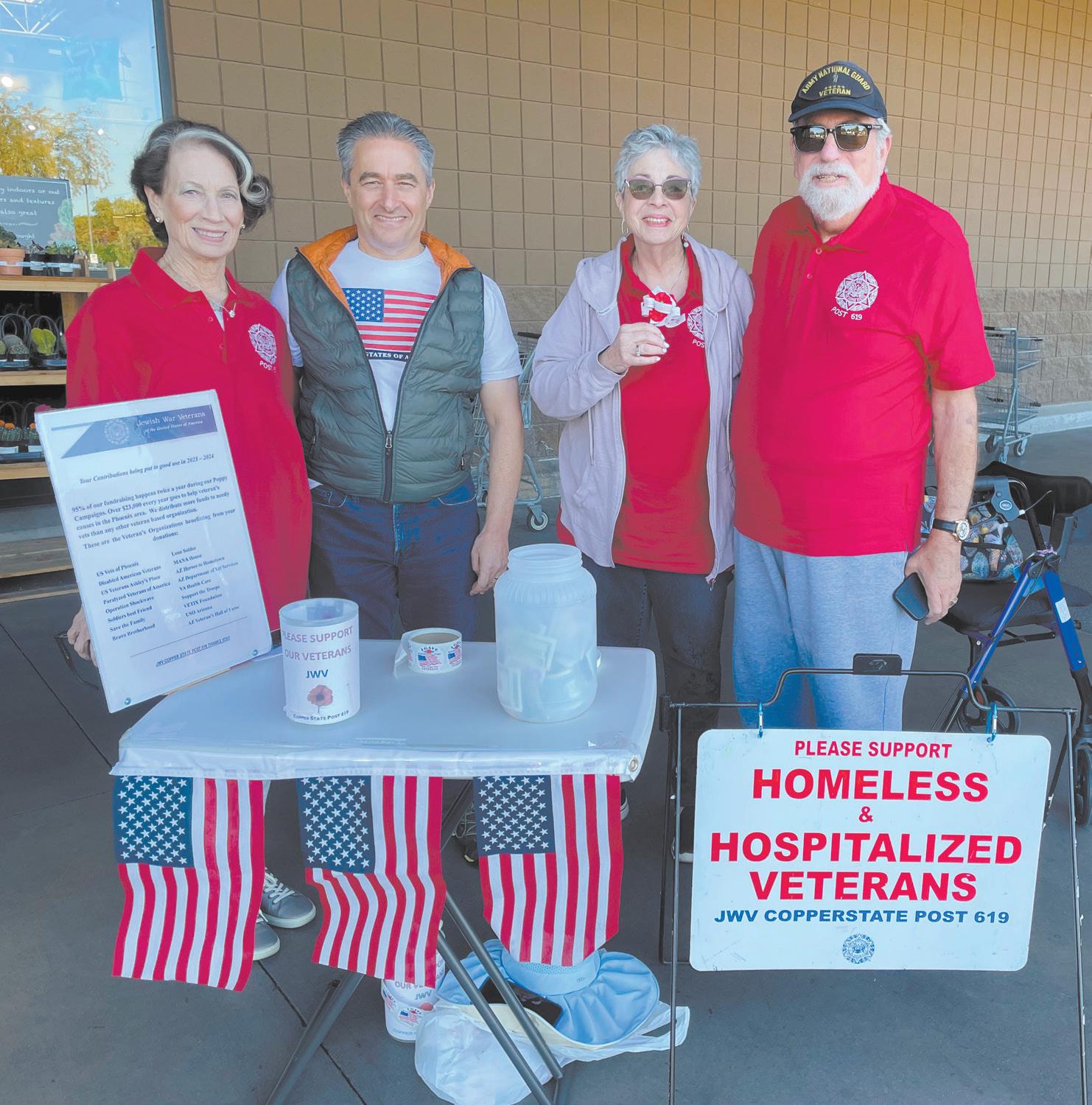
Turning out for veterans

On Monday, Oct. 7, Reverend Bruce Scott, left, director of program ministries for the Friends of Israel Gospel Ministries, presented Steve Hilton with a $5,000 gift for the Building a Legacy of Hope Capital Campaign. This is the first significant gift from the interfaith community in support of the Hilton Family Holocaust Education Center, which should break ground next year.
OF
TUESDAY, DEC. 3
Jewish Free Loan’s Latkes & Loans:
5:30-7
p.m. Ina Levine Jewish Community Campus, 12701 N. Scottsdale Road, Scottsdale. Join Jewish Free Loan for an evening of celebration and support of interest-free lending. This is a family-friendly event. PJ Library will be participating with kid-centric activities and stories. For more information, visit jewishfreeloan.org.
NOW THROUGH DEC. 17
Arizona Jews for Justice Holiday Toy Drive: 10 a.m.-5 p.m. daily. Join Arizona Jews for Justice to spread holiday joy to children across Arizona through its annual Holiday Toy Drive. Donate new, unwrapped toys for children ages 13 and under. Your generosity will bring smiles and brighten the holidays for Native American children, foster kids and families facing financial hardship. To arrange a drop off or for more information, contact arizonajews4justice@gmail.com.
SATURDAY, NOV. 23
SLJC Adult Education: 10:15 a.m. Sun Lakes Chapel Center, 9230 E. Sun Lakes Blvd. N., Sun Lakes. Join Sun Lakes Jewish Congregation for “Engaging in Meaningful Relationships: The Importance in Our Lives” with a discussion led by Rabbi Irwin Wiener, D.D. For more information, contact 480-612-4413.
SUNDAY, NOV. 24
3GAZ Spring Planning Meeting: 10 a.m.-12 p.m. Coffee Plantation, 7366 E. Shea Blvd. #101, Scottsdale. Join 3GAZ, descendants of Holocaust survivors, for its spring planning meeting. For more information, visit phxha.com/ events/3gaz-spring-planning-meeting/.
WEDNESDAY, NOV. 27
Is There a Connection Between Saul’s Murderous Paranoia and His Religious Fundamentalism?: 10-11 a.m. Online. Join Valley Beit Midrash for a presentation by Dr. Rabbi Zev Farber, senior editor of TheTorah.com and a research fellow at the Shalom Hartman Institute. For more information, visit valleybeitmidrash.org.
Mini Israeli Dance Marathon: 6:30-9:30 p.m. Temple Beth Sholom of the East Valley, 3400 N. Dobson Road, Chandler. Join TBSEV for an Israeli tradition of enjoying a dance marathon the Wednesday night before Thanksgiving. Event starts at 6:30 p.m. with warm ups and at 7 p.m. there will be some teaching in circle and line dances for beginners. Cost: $10 per person nonmembers; free for members. For more information, visit tbsev.org.
TUESDAY, DEC. 3
Uplifting Israel’s Most Vulnerable: 9 a.m. Online. North Scottsdale location provided upon registration. Hear from one of the Center for Jewish Philanthropy’s core overseas partners, JDC, about their ongoing emergency efforts in Israel and how they have been assisting Israel’s most vulnerable since the tragedies of Oct. 7. Cost: Free. For more information, contact Kaylie Medansky at 480481-1788 or kmedansky@phoenixcjp.org.
Adventures of the Rabbi Who Became a Flight Attendant: 10 a.m. East Valley Jewish Community Center, 908 N. Alma School Road, Chandler. Join the EVJCC for a presentation by Rabbi David Pinkwasser as he shares stories from his new book. Cost: Free; reservations required. For more information, visit evjcc.org/event/tuesdays-at-the-j-21.
SUNDAY, DEC. 8
Hanukkah Party in the Park: 1-2:30 p.m. Location provided upon registration. Join Gesher Disability Resources for music, games, arts & crafts and snacks. For more information, visit gesherdr.org/events.
Curry and Kreplach: 2-4 p.m. Beth Emeth Congregation, 13702 W. Meeker Blvd., Sun City. Join Beth Emeth for a presentation by Dan Fellner, travel writer, on some of the most interesting Jewish communities around the world. Cost: $18 members, $20 non-members; registration closes on Dec. 1. For more information, call 623-584-7210.
Hanukkah Holiday Bazaar and Community Celebration: 4-8 p.m. Pardes Jewish Day School, 12753 N. Scottsdale Road, Scottsdale. Join Pardes Jewish Day School, PJ Library and Bureau of Jewish Education of Greater Phoenix for songs, crafts, bounce house, face painting and local vendors offering holiday gifts. For more information, visit bjephoenix.org/events/2024/12/08/ hanukkah-holiday-bazaar-and-communitycelebration.
SUNDAYS
B.A.G.E.L.S: 9-11 a.m.; last Sunday of the month. Valley of the Sun Jewish Community Center, 12701 N. Scottsdale Road, Scottsdale. Grab a bagel and a cup of coffee at Bagels And Gabbing Every Last Sunday and enjoy some time with your friends and make new ones. You must register to attend. Bagels and coffee will be provided. Cost: Free for members, $5 for guests. For more information and to register, visit vosjcc.org.
THURSDAYS
Storytime at Modern Milk: 9:30 a.m. Modern Milk, 13802 N. Scottsdale Road, #163, Scottsdale. Storytime for babies, toddlers and preschoolers. Integrates children’s books and songs while giving parents new ideas for play. Cost: $5. For more information and to register, visit modernmilk.com/after-baby.
SUNDAYS
Chassidus Class: 9 a.m. Online. Learn about the Chasidic movement with Rabbi Yossi Friedman. Use this link: ChabadAZ.com/ LiveClass. Cost: Free. For more information, visit chabadaz.com.
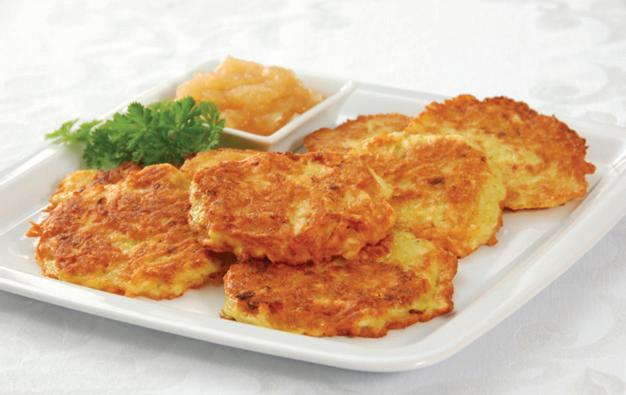
Jewish War Veterans Post 210: 10 a.m. Online. Any active duty service member or veteran is welcome to join monthly meetings, every third Sunday. Cost: Free. For more information, email Michael Chambers at c365michael@yahoo.com.
Sundays are for the Family Weekly Feed: 3-5 p.m. Tempe Beach Park, 80 W. Rio Salado Pkwy., Tempe. Join Arizona Jews for Justice and AZ HUGS for the Houseless every Sunday to serve food to those in need. For more information and to RSVP, email Arizonajews4justice@gmail.com.
Anxiety in the Modern World: 6 p.m. Online. Learn the secrets of the Torah for living stress-free in the current environment with Rabbi Boruch of Chabad of Oro Valley. Cost: Free. Use this link: zoom.us/j/736434666. For more information, visit chabadaz.com.
MONDAYS
Pomegranate Guild of Judaic Needlework, Desert Cactus Chapter: 10 a.m. The Oasis at Sagewood, 4555 E. Mayo Blvd., Phoenix. The guild meets the third Monday of the month, adjusted when necessary to accommodate Jewish holidays. For more information, visit pomegranateguild.org.
Mahjong: 1:30-3:30 p.m. East Valley Jewish Community Center, 908 N. Alma School Road, Chandler. Come play mahjong each week. For all levels. Cost: Free; registration required at evjcc.org/mahjong.
Ethics of Our Fathers: 7 p.m. Online. Learn with Rabbi Zalman Levertov. Use this link: bit.ly/2Y0wdgv. Cost: Free. For more information, visit chabadaz.com.
Quotable Quotes by our Sages: 7 p.m. Online. Learn with Rabbi Shlomy Levertov. Use this link: JewishParadiseValley.com/ class. Cost: Free. For more information, visit chabadaz.com.
Partners in Torah: 7:30 p.m. Online. Join a growing group of inspired learners with Project Inspire. Cost: Free. Use this link: us04web. zoom.us/j/3940479736#success, password is 613. For more information, email Robin Meyerson at robin@projectinspireaz.com.
Learning to Trust in God: 7:30 p.m. Online. Learn with Rabbi Yossi Friedman. Use this link: ChabadAZ.com/LiveClass. Cost: Free. For more information, visit chabadaz.com.
Torah & Tea: 7:30 p.m. Online. Learn with Rabbi Yossie Shemtov. Cost: Free. For more information, visit Facebook.com/ ChabadTucson.
Single Parent Zoom: 8 p.m. First and third Monday of every month. Join The Bureau of Jewish Education’s Family University single parents’ group for those looking to form
friendships and build their support system with like-minded people. For more information or to register, visit bjephoenix.org/ family-university.
TUESDAYS
Let’s Knit: 1:30 p.m. Ina Levine Jewish Community Campus, 12701 N. Scottsdale Road, Scottsdale. Share the pleasure of knitting, crocheting, etc. outside the social hall in the campus. Can’t knit? They will teach you! Every level welcome. Cost: Free. For more information, visit vosjcc.org.
Maintaining an Upbeat Attitude: 7 p.m. Online. A class exclusively for people in their 20s and 30s, learn how Jewish Mysticism can help with your attitude with Rabbi Shlomy Levertov. Use this link: JewishParadiseValley.com/YJPclass. Cost: Free. For more information, visit chabadaz.com.
Torah Studies: 7:30 p.m. Online. Learn with Rabbi Mendy Levertov. Use this link: ourjewishcenter.com/virtual. Cost: Free. For more information, visit chabadaz.com.
WEDNESDAYS
Torah Study with Temple Beth Shalom of the West Valley: 11 a.m.-12:30 p.m. Online. Weekly study group explores that week’s portion and studies different perspectives and debates the merits of various arguments. Intended for adults, Torah study is open to students of all levels. For more information, contact the TBS office at 623-977-3240.
Happiness Hour: 11:30 a.m. Online. Class taught by Rabbi Pinchas Allouche that delves into texts and references culled from our traditions to address a relevant topic. For more information or to join, visit cbtvirtualworld.com.
Lunch & Learn: 12 p.m. Online. Grab some food and learn with Rabbi Yehuda Ceitlin. Use this link: Facebook.com/ChabadTucson. Cost: Free. For more information, visit chabadtucson.com.
Torah Study with Chabad: 12 p.m. Online. Take a weekly journey of Torah with Rabbi Yossi Levertov. Cost: Free. For more information, visit chabadaz.com.
The Thirteen Petalled Rose: 1 p.m. Online. Kabbalah class that studies “The Thirteen Petalled Rose” by Rabbi Adin Even-Israel Steinsaltz, focusing on the many concepts of Kaballah and Jewish Mysticism and applying them to everyday life. For more information or to join, visit cbtvirtualworld.com.
Grief Support Group: 5-6 p.m. Online via Zoom. Therapist Susan Charney MCW, LCSW, leads a grief support group every first and third Wednesday of the month virtually for individuals experiencing the loss
of an adult child or sibling. In lieu of any fees for these sessions, donations to Temple Solel are appreciated. For more information, contact susancharneycounseling@gmail.com.
History of the Jews: 7 p.m. Online. Learn the Jewish journey from Genesis to Moshiach with Rabbi Ephraim Zimmerman. Use this link: zoom.us/j/736434666. Cost: Free. For more information, visit chabadaz.com.
JACS: 7:30-8:30 p.m. Online. Zoom support group for Jewish alcoholics, addicts and their friends and family on the first and third Wednesdays of the month. Cost: Free. For more information, email jacsarizona@gmail.com or call 602-692-1004.
THURSDAYS
Hanukkah: The Clash Between Greeks and Jews: 10-11:30 a.m. Dec. 5, 12 & 19. Temple Beth Shalom of the West Valley, 12202 N. 101st Ave., Sun City. Join TBSWV and Rabbi Dana Evan Kaplan for an interfaith course exploring the miraculous military history of the war between the Syrian Greeks and the Jews over 2,200 years ago leading to the Jewish holiday called Hanukkah. For more information, visit tbsaz.org.
Ladies Torah & Tea: 10:30 a.m. Online. Learn about the women of the Torah with Mrs. Leah Levertov. Use this link: ourjewishcenter. com/virtual. Cost: Free. For more information, visit chabadaz.com.
Talmud - Maakos: 11 a.m. Online. Learn with Rabbi Shlomy Levertov. Cost: Free. Use this link: JewishParadiseValley.com/YJPclass. For more information, visit chabadaz.com.
The Science of Everything: 11 a.m. Online. Explore the most fundamental work of Chassidut: the Tanya, with Rabbi Boruch. Use this link: zoom.us/j/736434666. Cost: Free. For more information, visit chabadaz.com.
Mindfulness Gatherings: 12 p.m. Online. Hosted by Hospice of the Valley via Zoom. Cost: Free. To join by phone, dial 1-253-2158782, meeting ID 486 920 2119#, to get the Zoom link or for further questions contact Gill Hamilton at ghamilton@hov.org or 602-748-3692.
Weekly Mahjong: 1-3 p.m. Temple Solel, 6805 E. McDonald Drive, Paradise Valley. Join Temple Solel each Thursday afternoon for mahjong. Lessons available for beginners. Cost: Free. RSVP via email to dottiebefore@gmail.com so they know how many tables to set up.
Teen Discussions: 7-8:30 p.m. Online. Learn with Rabbi Tzvi Rimler. Use this link: cteen. clickmeeting.com/east-valley. Cost: Free. For more information, visit chabadaz.com.
SATURDAYS
Saturday Mindfulness Gatherings: 9:30 a.m. Online. Hosted by Hospice of the Valley. To join by phone, dial 1-253-215-8782, meeting ID 486 920 2119#. To get the Zoom link or for more information, contact Gill Hamilton at ghamilton@hov.org or 602-748-3692.
Book Discussion: 1:30-2:30 p.m. Online. Join Or Adam Congregation for Humanistic Judaism on the third Saturday of every month for a book discussion. For more information and to register, contact oradaminfo@gmail.com.
FRIDAYS
Shabbat in the Park: 10-11 a.m. Cactus Park, 7202 E. Cactus Road, Scottsdale. Join the Bureau of Jewish Education of Greater Phoenix monthly for music, parachute play, crafts and a family Shabbat experience. For more information, visit bjephoenix.org.
Welcome Shabbat: 11-11:30 a.m. Online. Celebrate Shabbat with the JFCS Virtual Center for Senior Enrichment. Each week a different guest host will lead the program with song and celebration. Cost: Free. For more information, visit jfcsaz.org/cse.
Shabbat at Beth El: 7:15 a.m. and 5:45 p.m on Zoom; 9:30 a.m. at Beth El Phoenix, 1118 W. Glendale. Ave., Phoenix or livestreaming on YouTube. Celebrate Shabbat with songs, blessings and teachings with Rabbi Stein Kokin the first Friday of every month. Special guests will be welcoming Shabbat during the remainder of the month. For more information or to join, visit bethelphoenix.com.
Erev Shabbat Service: 5:30 p.m. Online. Rabbi Alicia Magal will lead a service livestreamed for members of the Jewish Community of Sedona and the Verde Valley. Cost: Free. For more information and to obtain the Zoom link, visit jcsvv.org/contact.
Shabbat Services: 5:30 p.m. nosh, 6:15 p.m. service; morning service has varying dates and times. Temple Chai, 4645 E. Marilyn Road, Phoenix. For more information, contact Joan Neer at jneer@templechai.com.
Shabbat Services with Sun Lakes: 5:30-6:15 p.m. Sun Lakes Chapel, 9240 E. Sun Lakes Blvd. North, Sun Lakes. Sun Lakes Jewish Congregation conducts this twilight service on Aug. 9. For more information, contact 480-612-4413.
Pre-Shabbat Kiddush Club: 6 p.m. Online. Say Kiddush with Rabbi Mendy Levertov. Cost: Free. Use this link: ourjewishcenter. com/virtual. For more information, visit chabadaz.com.
Shabbat Services: 6 p.m; 9:30 a.m. Congregation Or Tzion, 16415 N. 90th St., Scottsdale. Services are also live streamed at otaz. org/livestream. For more information about services, events and membership, visit congregationortzion.org or call 480-342-8858.
Shabbat Service: 6-7 p.m.; Oneg at 5:15 p.m. Temple B’rith Shalom, 2077 Brohner Way, Prescott. Join Temple B’rith Shalom for a musical and spiritual Shabbat service. For more information, visit brithshalom-az.org.
First Friday Shabbat Services: 6:15 p.m.; Oneg at 7:15 p.m. Valley Unitarian Universalist, 6400 W. Del Rio St., Chandler. Join Congregation NefeshSoul for Friday night services the first Friday of each month in the sanctuary building of Valley Unitarian Universalist. For more information, contact Jim Hoffman at 480-329-3316.
Shabbat Services: 6:15 p.m; 10 a.m. Congregation Beth Israel, 10460 N. 56th St., Scottsdale. Services held in the Goldsmith Sanctuary. Participants must pre-register by Thursday at 5 p.m. Priority will be given to members first and then guests. If there are more requests than available seats a lottery system will be used. For more information or to make a reservation, visit cbiaz.org/ shabbat-services.
Kabbalat Shabbat and/or Shabbat morning service: 6:30 p.m.; 10 a.m.; dates vary. Congregation Kehillah, 5858 E. Dynamite Blvd., Cave Creek. Join Rabbi Bonnie Sharfman and cantorial soloists Erica Erman and Scott Leader either in person or via Zoom. For safety reasons, please register ahead of time. For dates, visit congregationkehillah. org/event/. Register by emailing info@congregationkehillah.org.
Shabbat Services: 7 p.m. Temple Beth Shalom of the West Valley, 12202 N. 101st Ave., Sun City. Services are followed by an Oneg. Services are live-streamed on YouTube. For more information and to get the YouTube link, visit tbsaz.org or call 623-977-3240.
Shabbat Services with Beth Ami Temple: 7 p.m. Gloria Christi Federated Church, 3535 E. Lincoln Dr., Paradise Valley. Rabbi Alison Lawton and Cantorial Soloist Michael Robbins lead Shabbat services twice a month. For more information, visit bethamitemple.org.
Third Friday Shabbat: 7-9 p.m. Group meets at a North Scottsdale location. The Desert Foothills Jewish Community Association hosts a Shabbat service followed by a program. Contact 602-487-5718 for more information.
MONDAYS
Fitness Xpress Series with Zoe: 11-11:30 a.m. Online. Presented by JFCS Center for Senior Enrichment. Workout features weight and band exercises as well as yoga poses. Exercises will be demonstrated standing, but can also be done sitting in a chair. Cost: Free. For more information, visit jfcsaz.org/cse.
Sip & Schmooze: 11 a.m. milk + honey, 12701 N. Scottsdale Road, Scottsdale. Sip on kosher coffee or tea, enjoy a pastry and schmooze every second Monday of the month. RSVP appreciated to chani@sosaz. org or 602-492-7670. For more information, visit sosaz.org.
Featured Presentation: 12:30 p.m. Online. Join Smile on Seniors Mondays and Wednesdays to learn from a variety of presenters about topical issues, like Q&As with medical professionals, entertainers and lectures. Cost: Free. For more information, visit sosaz.org/virtual or email Rabbi Levi Levertov at levi@sosaz.org.
TUESDAYS
Movie Discussion Group: 11 a.m. Online. Join Smile on Seniors on the third Tuesday of every month hosted by Issy Lifshitz. Cost: Free. For full details and the movie of the month visit sosaz.org/virtual or email Rabbi Levi Levertov at levi@sosaz.org.
WEDNESDAYS
Fitness Fun with Zoe: 10-10:45 a.m. Online. Presented by JFCS Center for Senior Enrichment. Workout features light chair exercises with optional weights. Cost: Free. For more information, visit jfcsaz.org/cse.
Chair Yoga with Zoe: 11-11:45 a.m. Online. Presented by JFCS Center for Senior Enrichment. 45-minute chair yoga class. No prior yoga experience required. Cost: Free. For more information, visit jfcsaz.org/cse.
THURSDAYS
Memory Cafe: 10-11 a.m. first Thursday; 1-2 p.m. third Thursday. Online. Presented by Jewish Family & Children’s Service. Program for those with changes in their thinking or memory, mild cognitive impairment due to Alzheimer’s disease or a related disorder, along with their care partners. For more information, visit jfcsaz.org/our-services/ older-adult-services/memory-cafe/.
In the Kitchen with Benita: 12:30 p.m. Join Smile on Seniors on the fourth Thursday of every month for some delicious cooking or baking fun! Cost: Free. For full details visit sosaz.org/virtual or email Rabbi Levi Levertov at levi@sosaz.org.
FRIDAYS
Welcome Shabbat: 11-11:30 a.m. Online. Celebrate Shabbat with the JFCS Virtual Center for Senior Enrichment. Each week a different guest host will lead the program with song and celebration. Cost: Free. For more information, visit jfcsaz.org/cse.
Sit or Stand Ballet Class: 12-12:45 p.m. Online. Presented by JFCS Center for Senior Enrichment. Jennifer Cafarella Betts and Friends from Ballet Theatre of Phoenix teach this class. Grab a chair or you can stand next to a chair or counter. Cost: Free. For more information, visit jfcsaz.org/cse.
Musical Friday: 12:30 p.m. Online. Join Smile on Seniors on the first Friday of every month for a musical presentation. Cost: Free. For full details visit sosaz.org/virtual or email Rabbi Levi Levertov at levi@sosaz.org. JN



SHARE YOUR ENGAGEMENT, WEDDING, BIRTH, BAR/BAT-MITZVAH ANNOUNCEMENT AND ANY OTHER SIMCHA ON BOTH JEWISHAZ.COM AND THE WEEKLY JEWISH NEWS ... FOR FREE . JEWISHAZ.COM